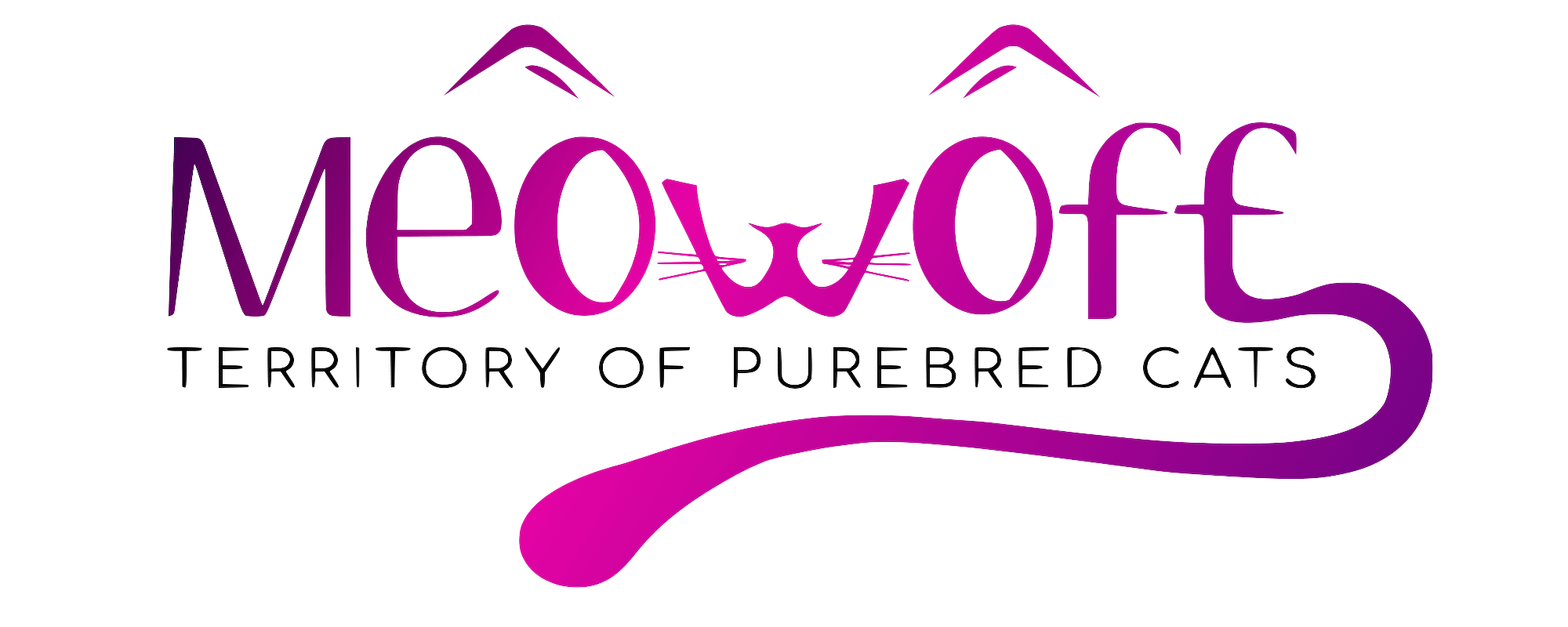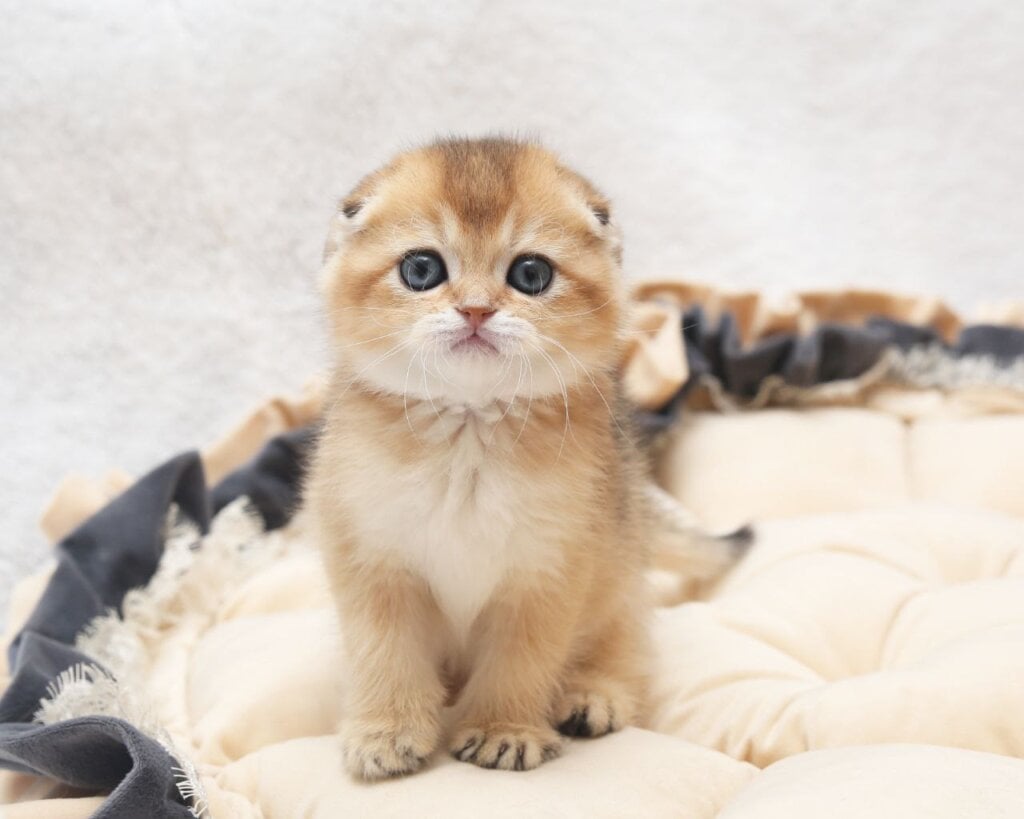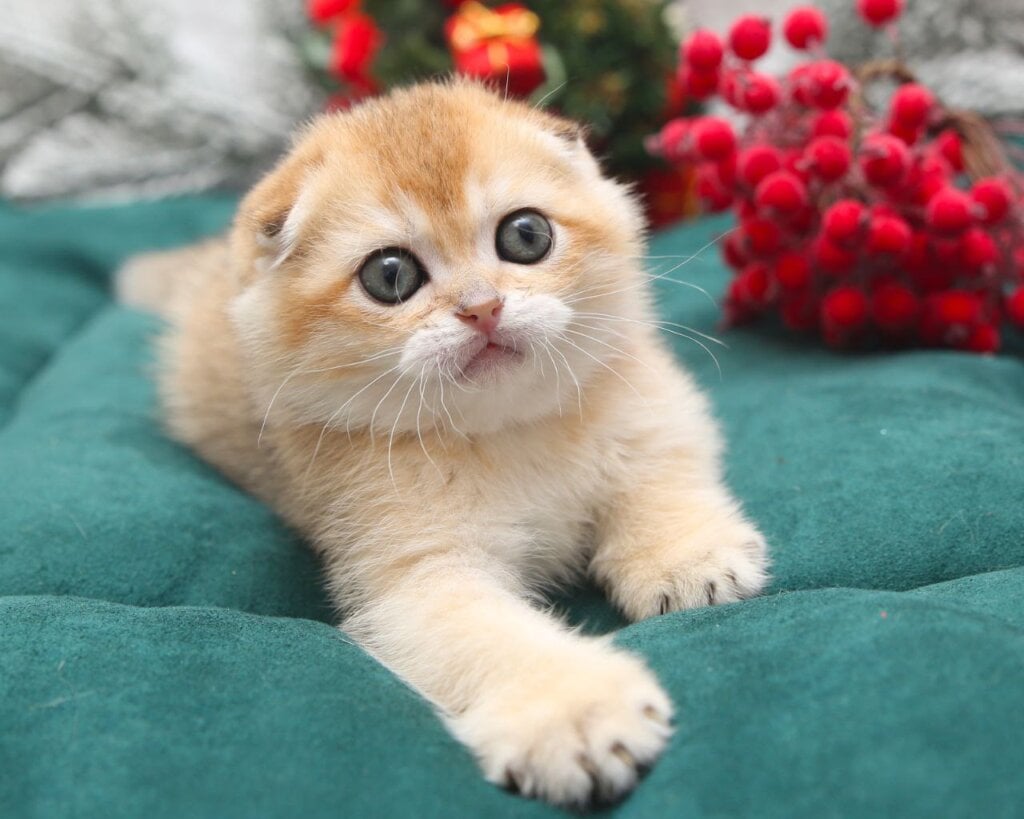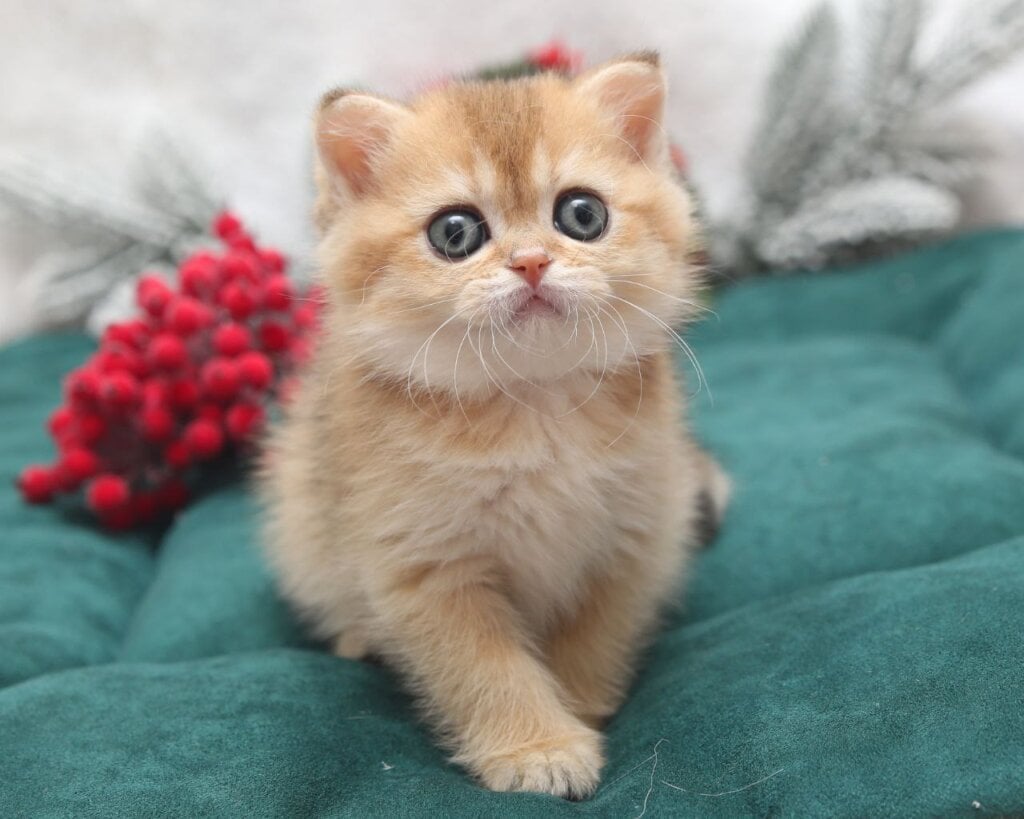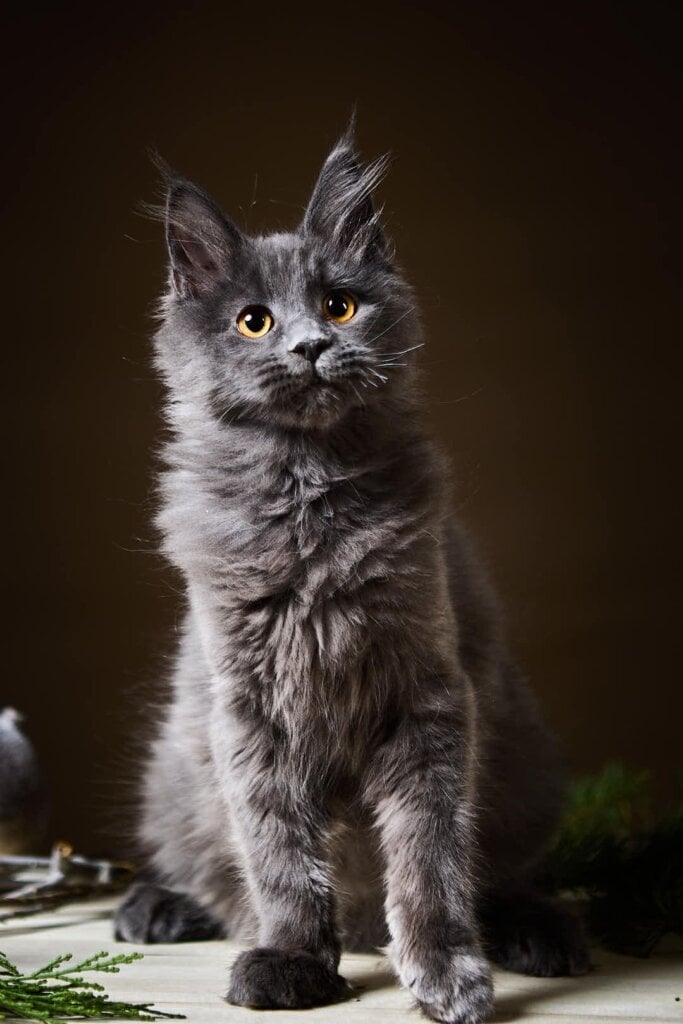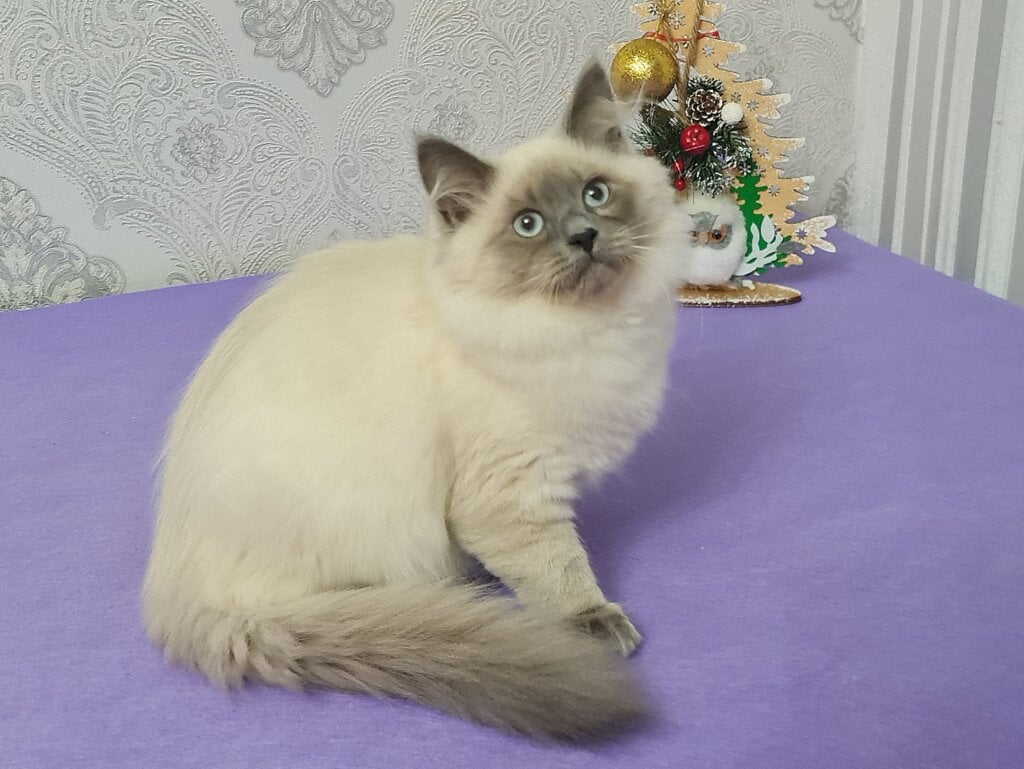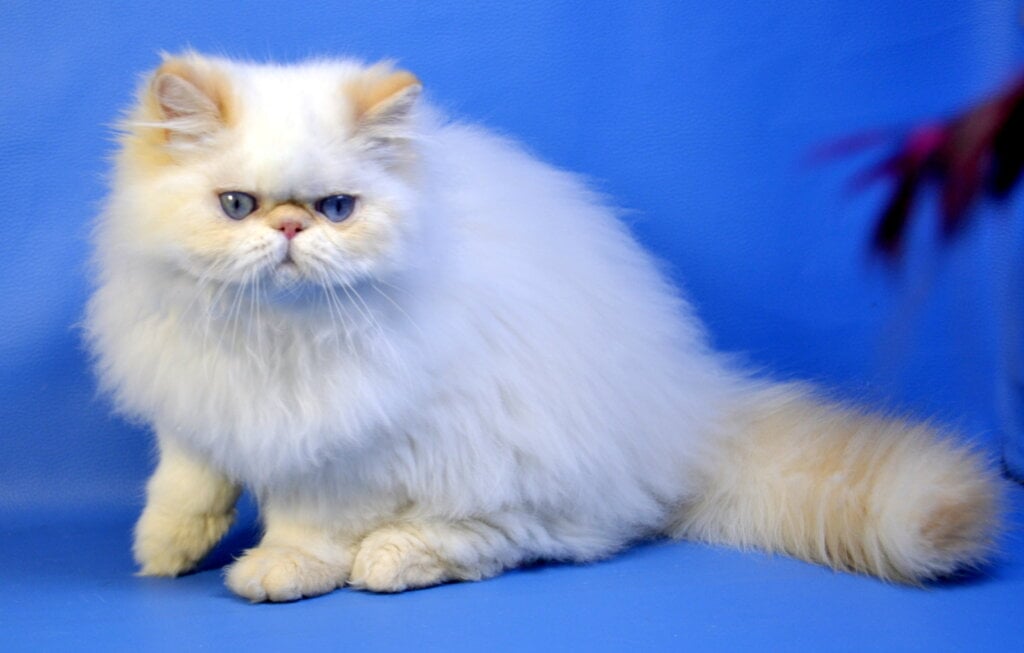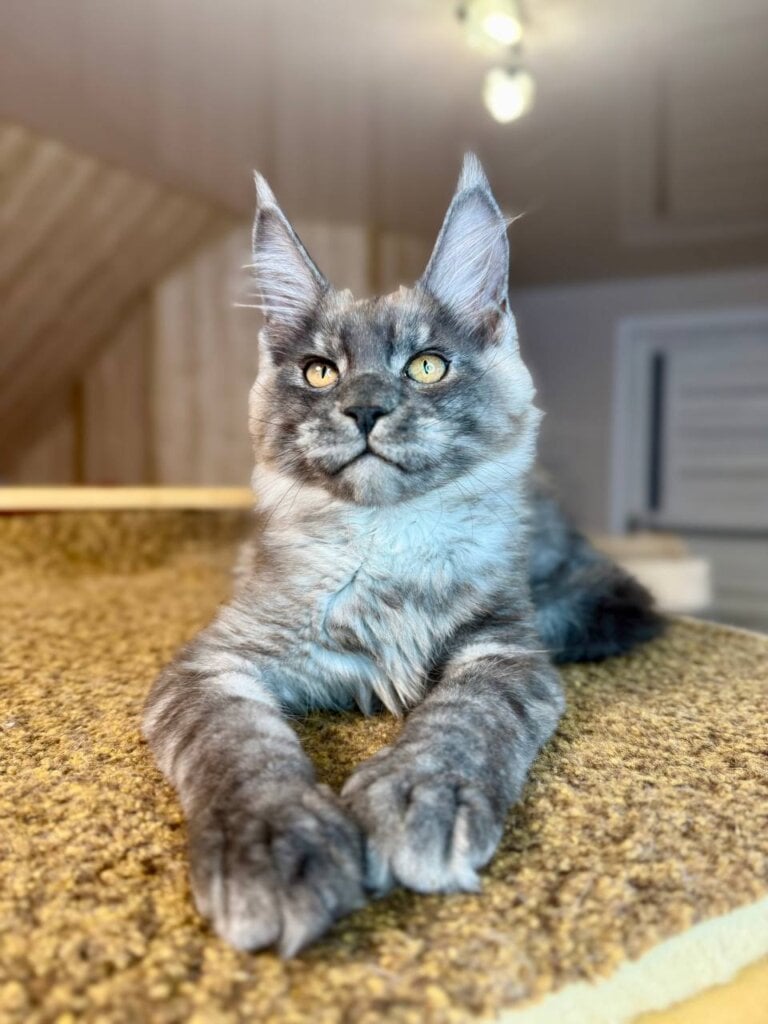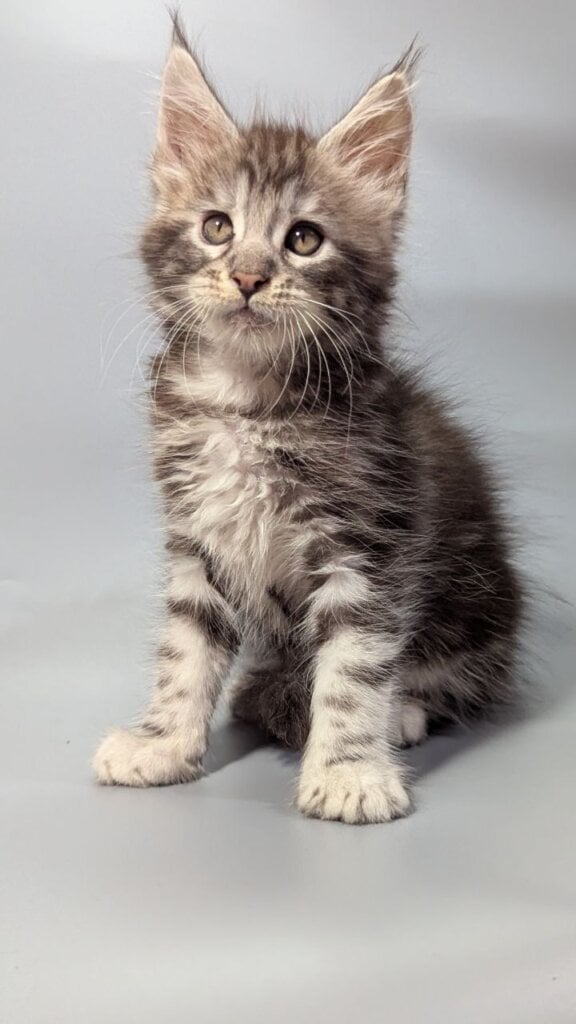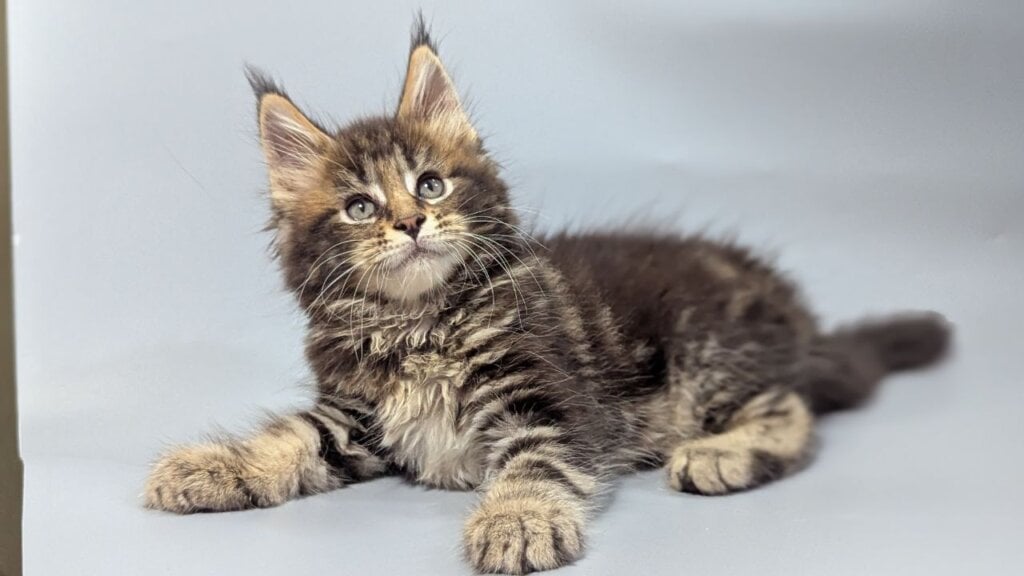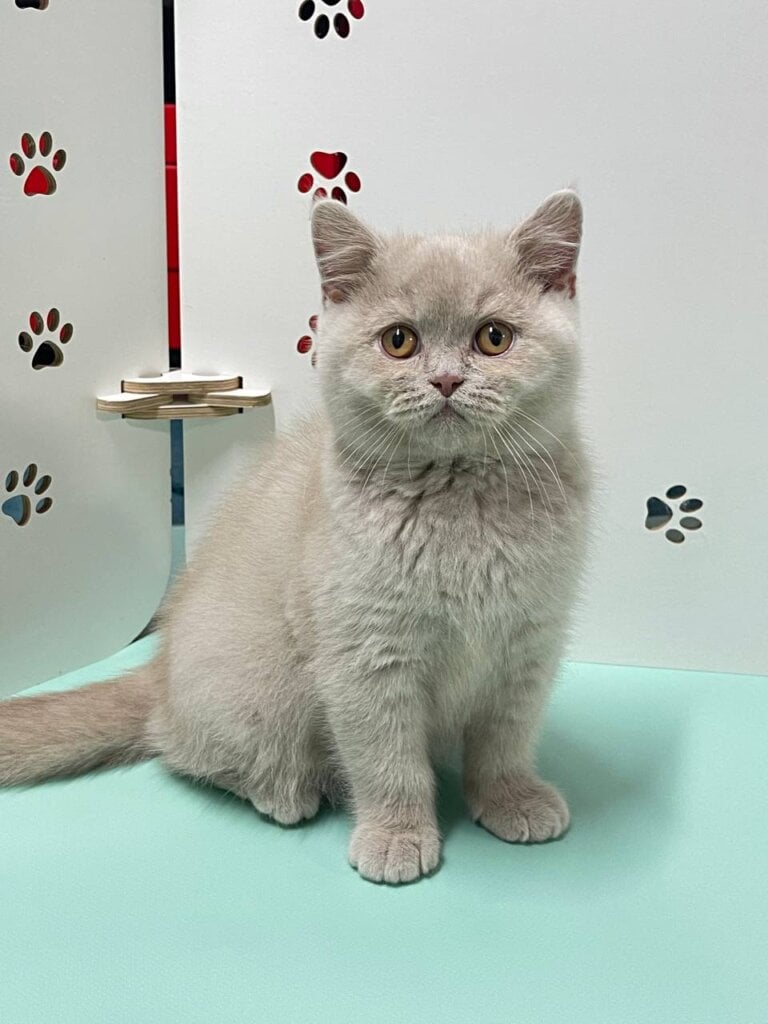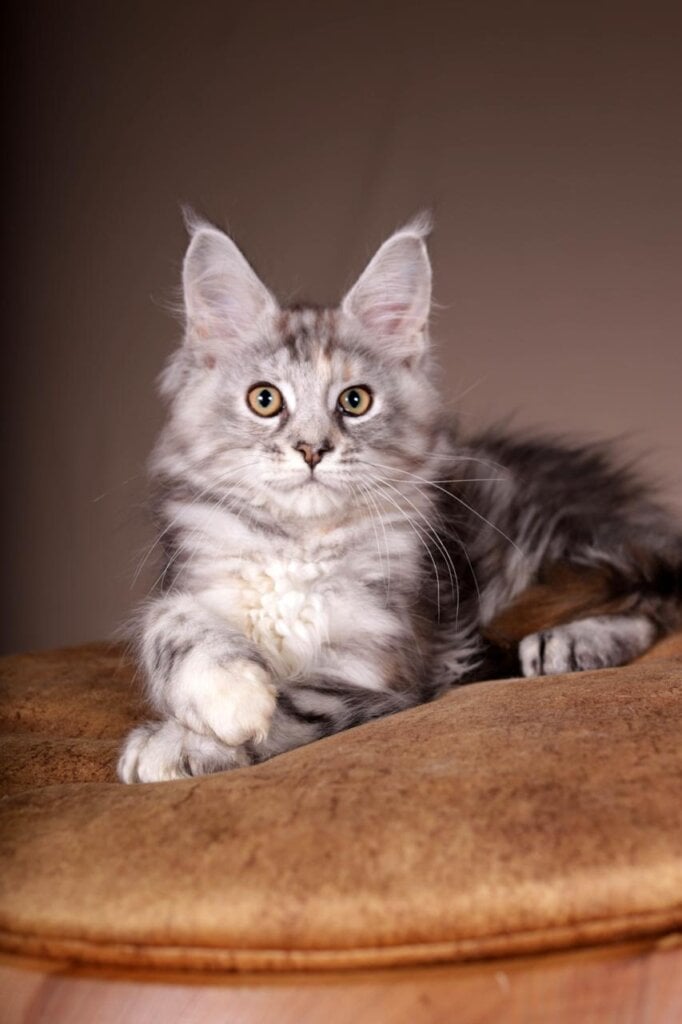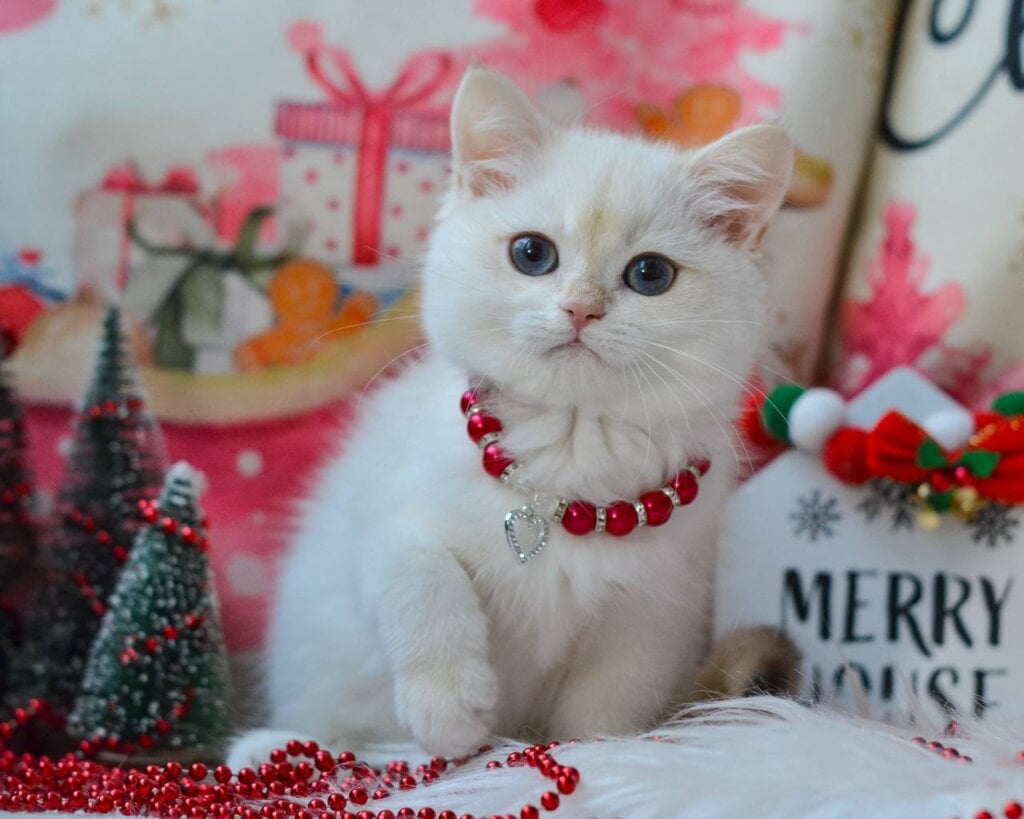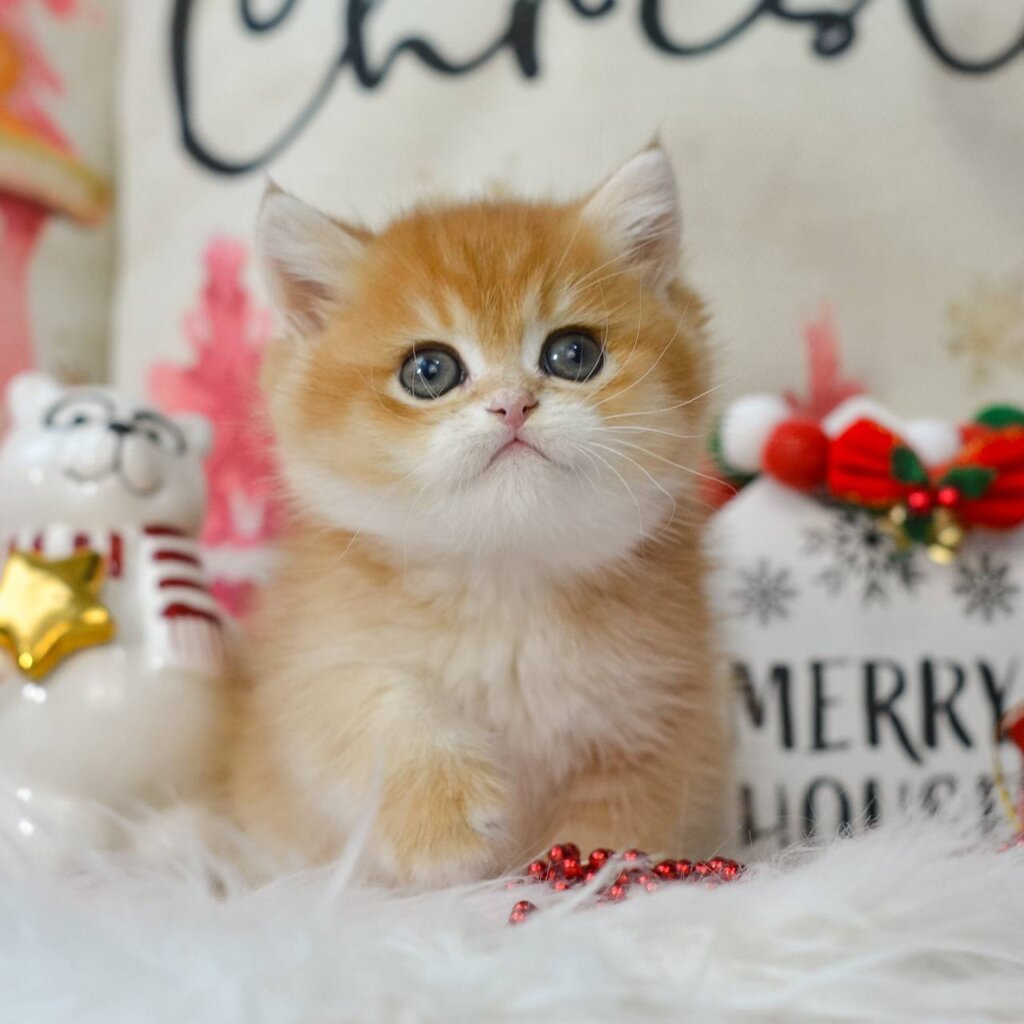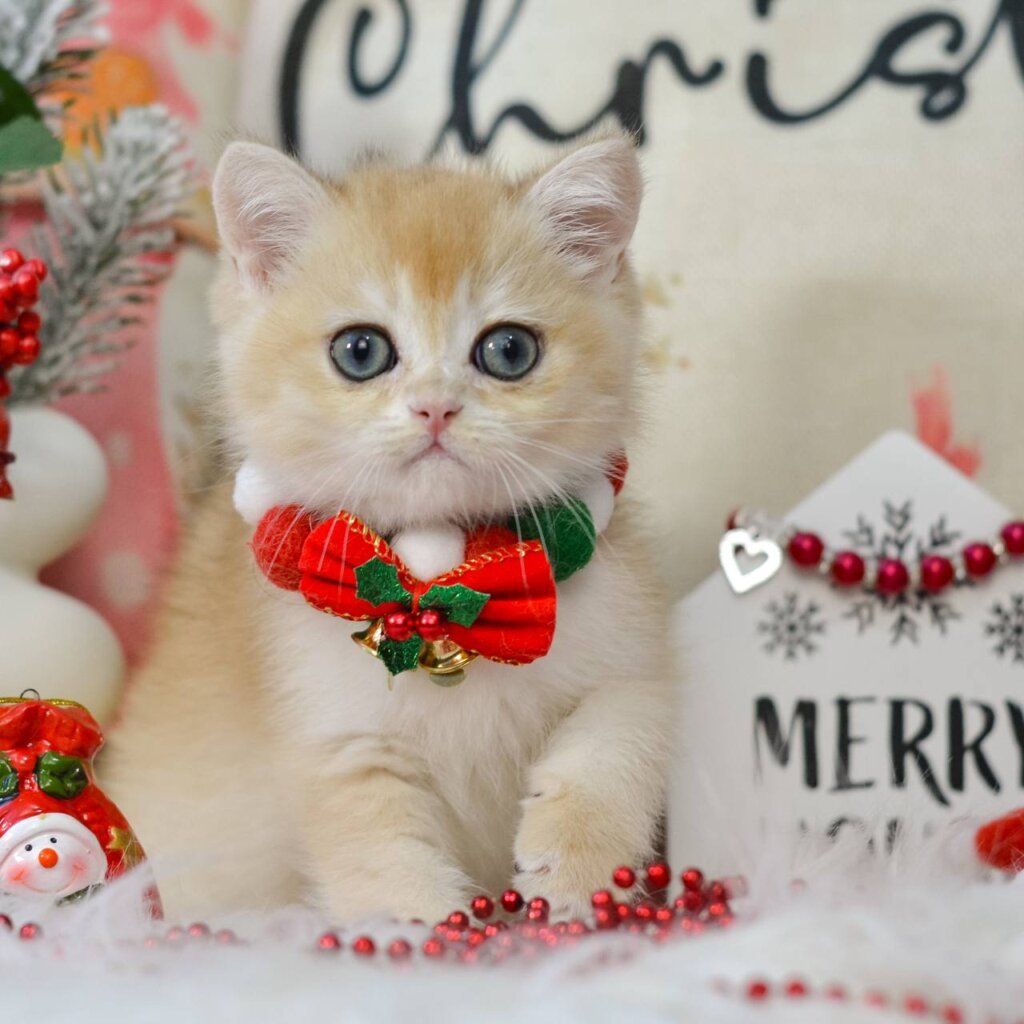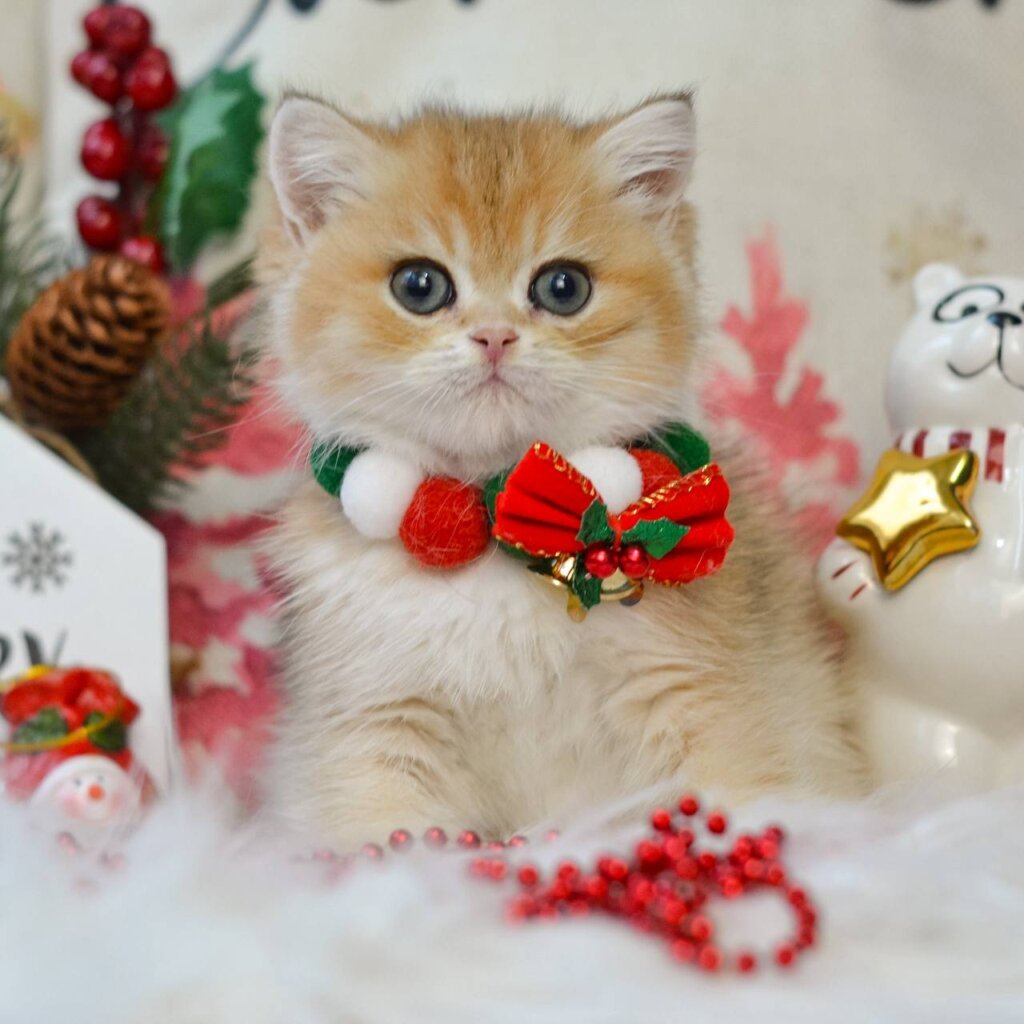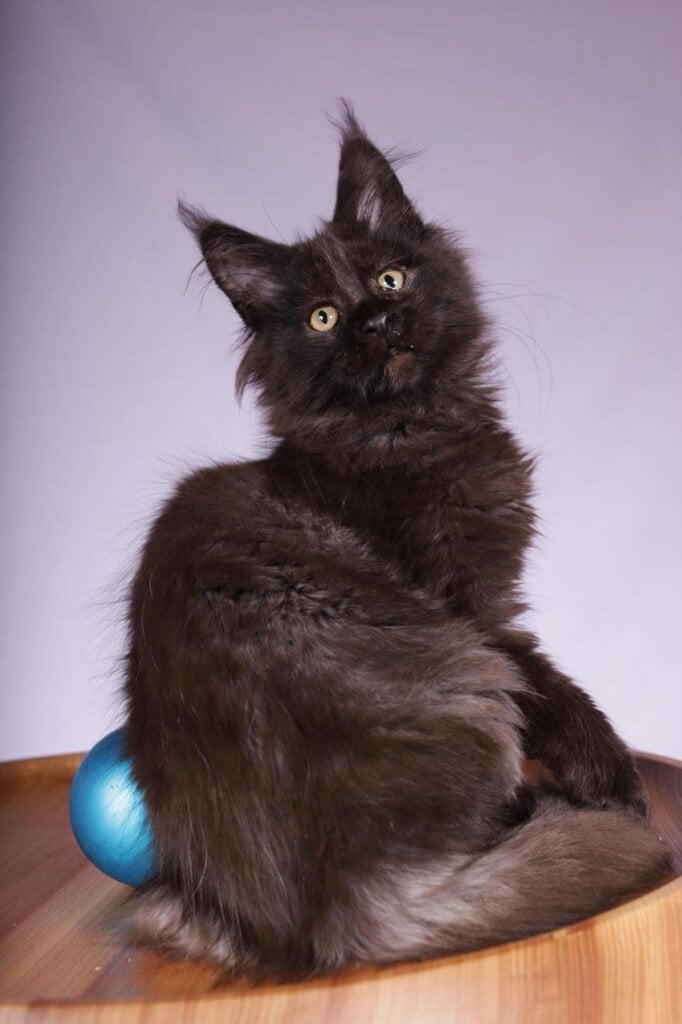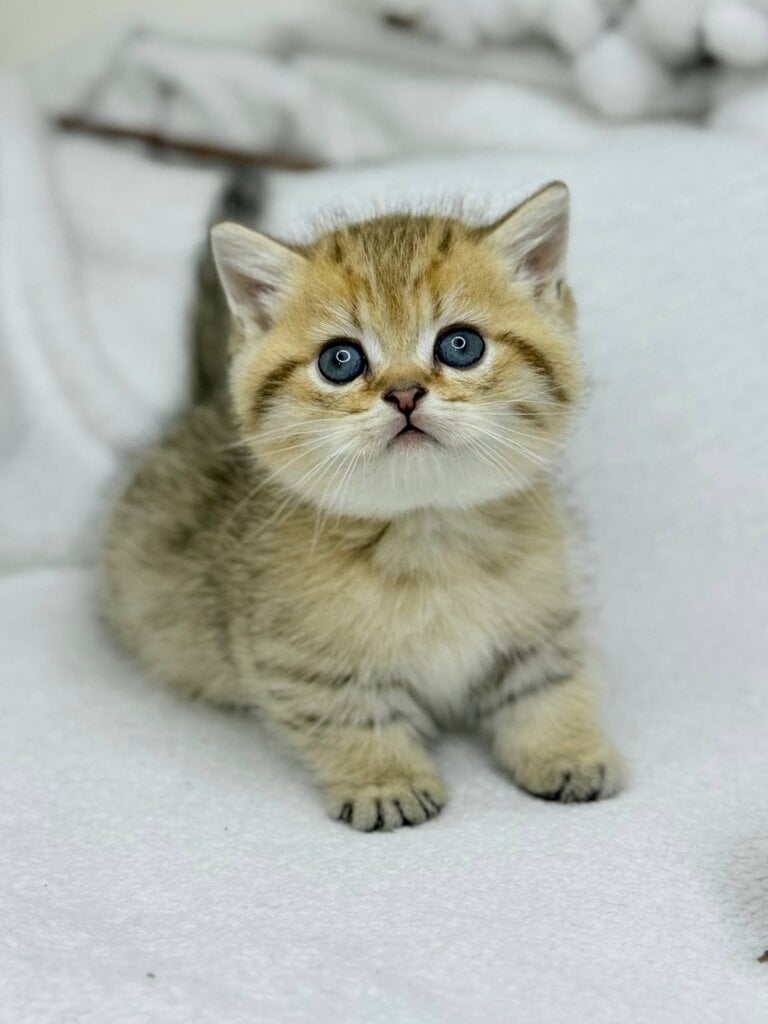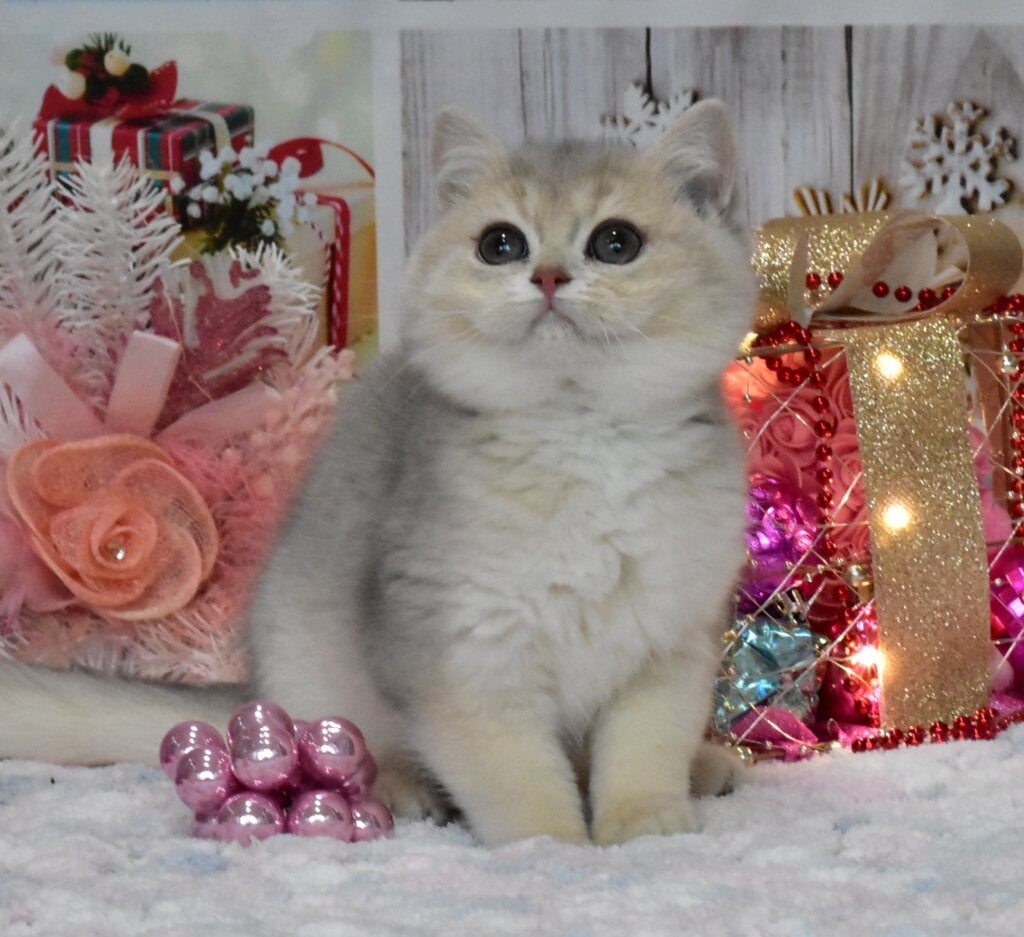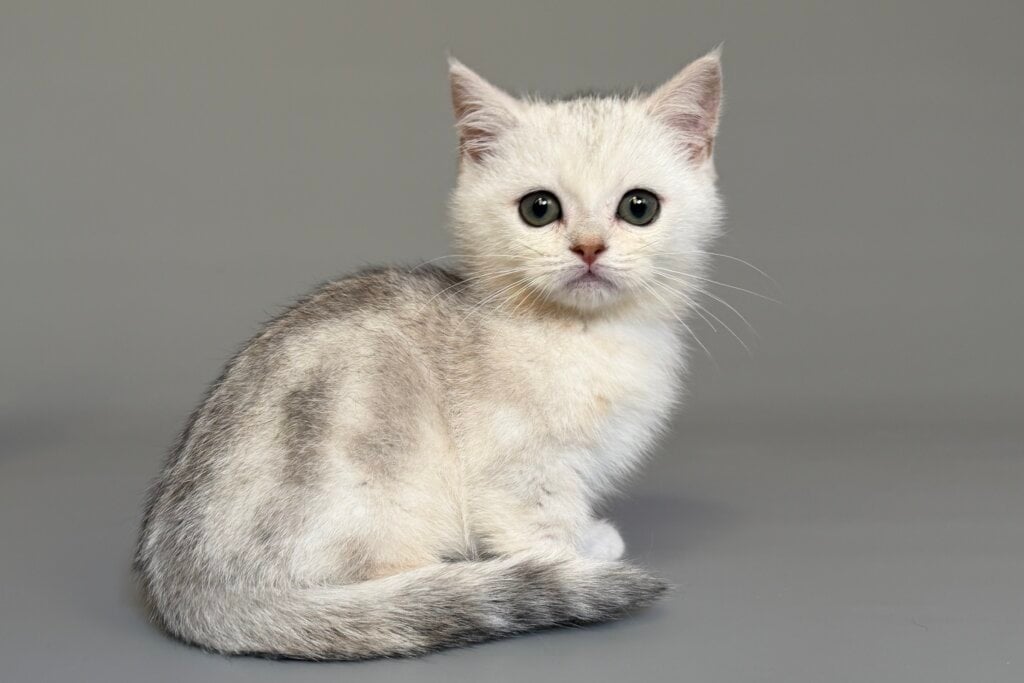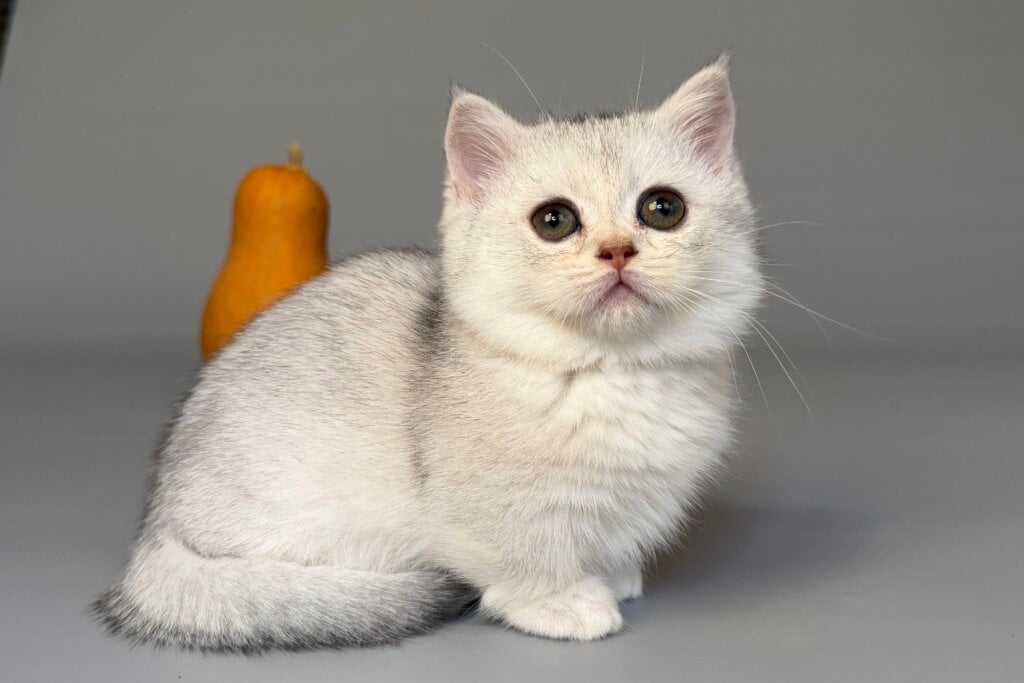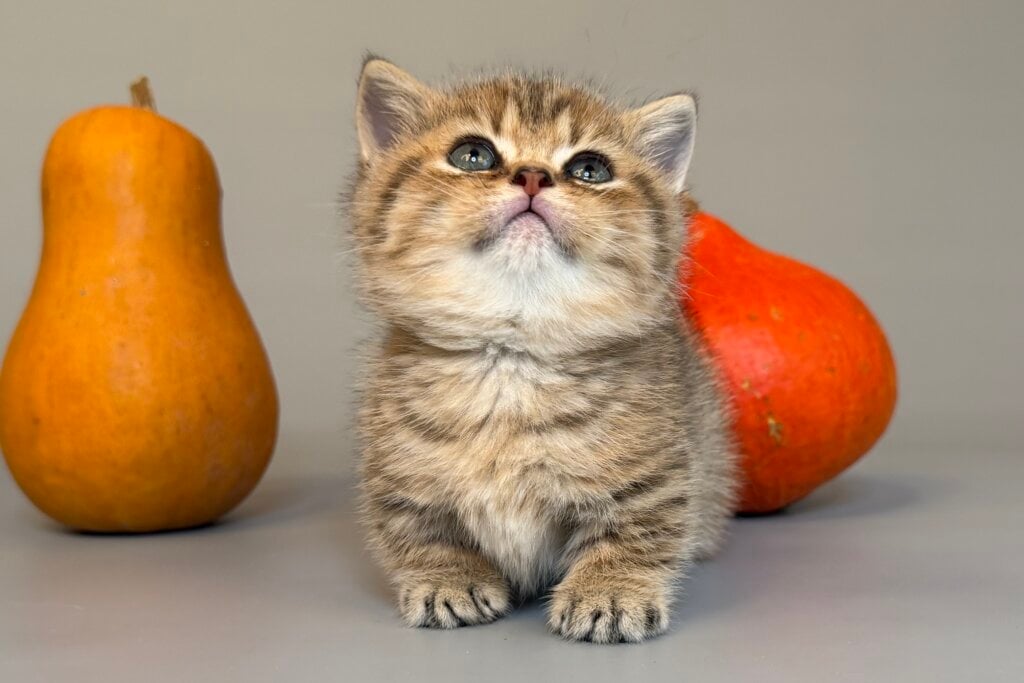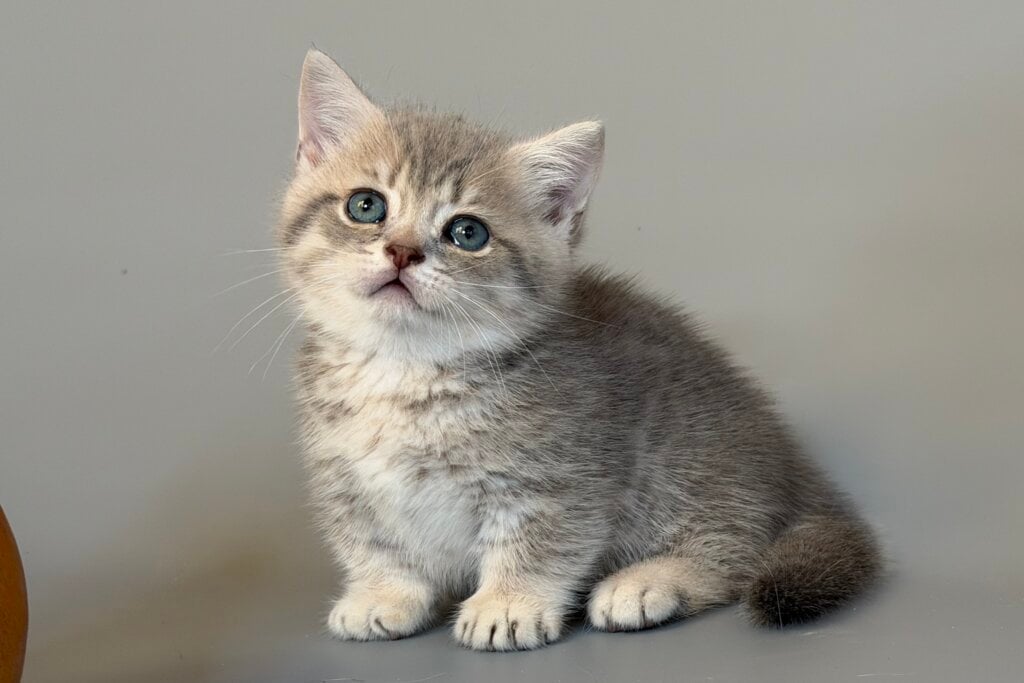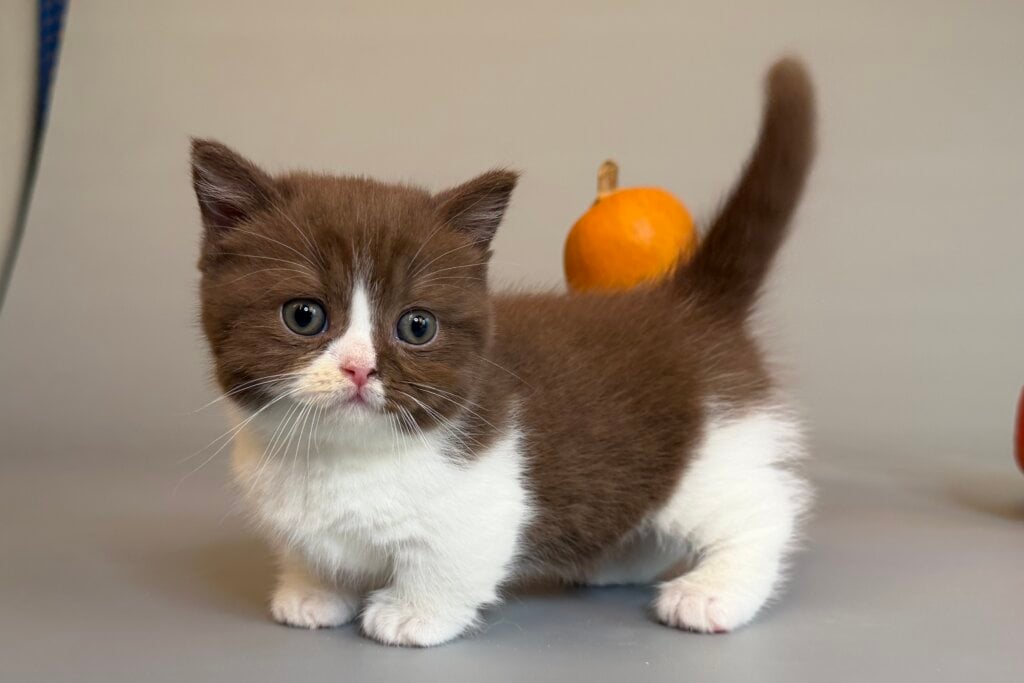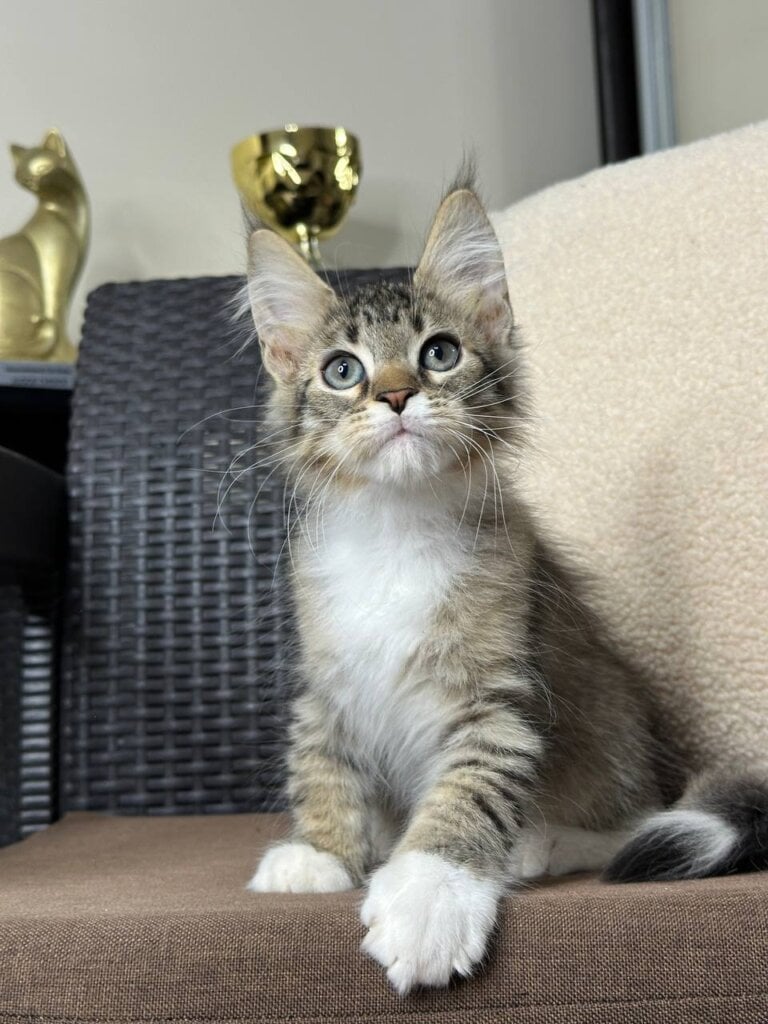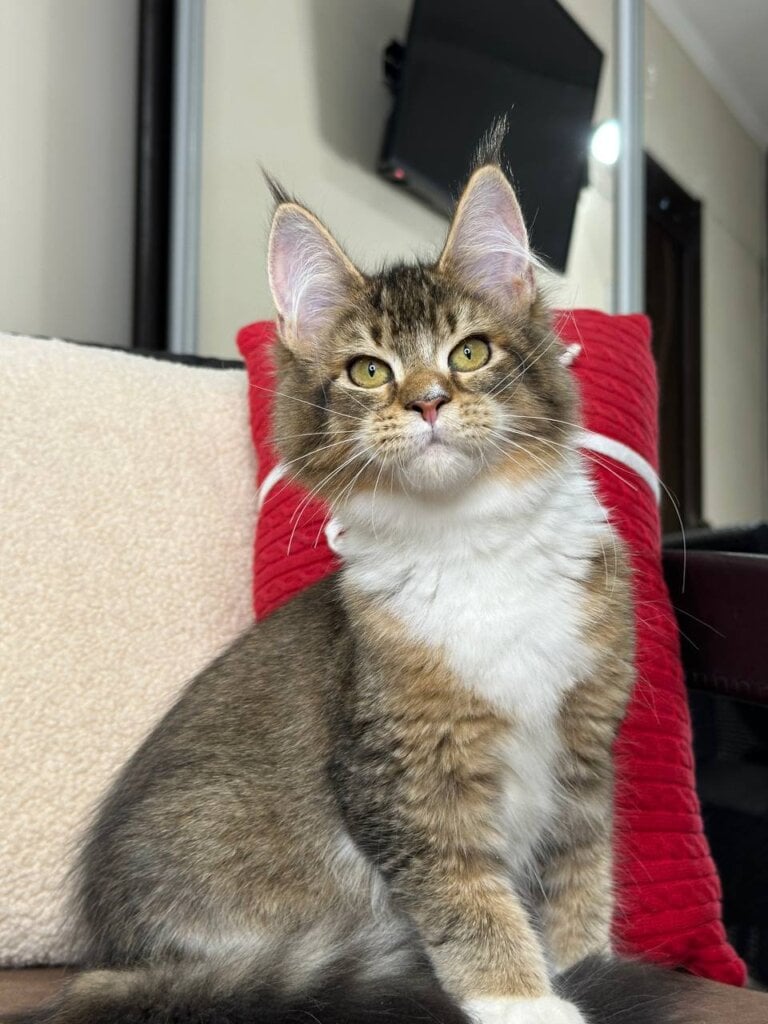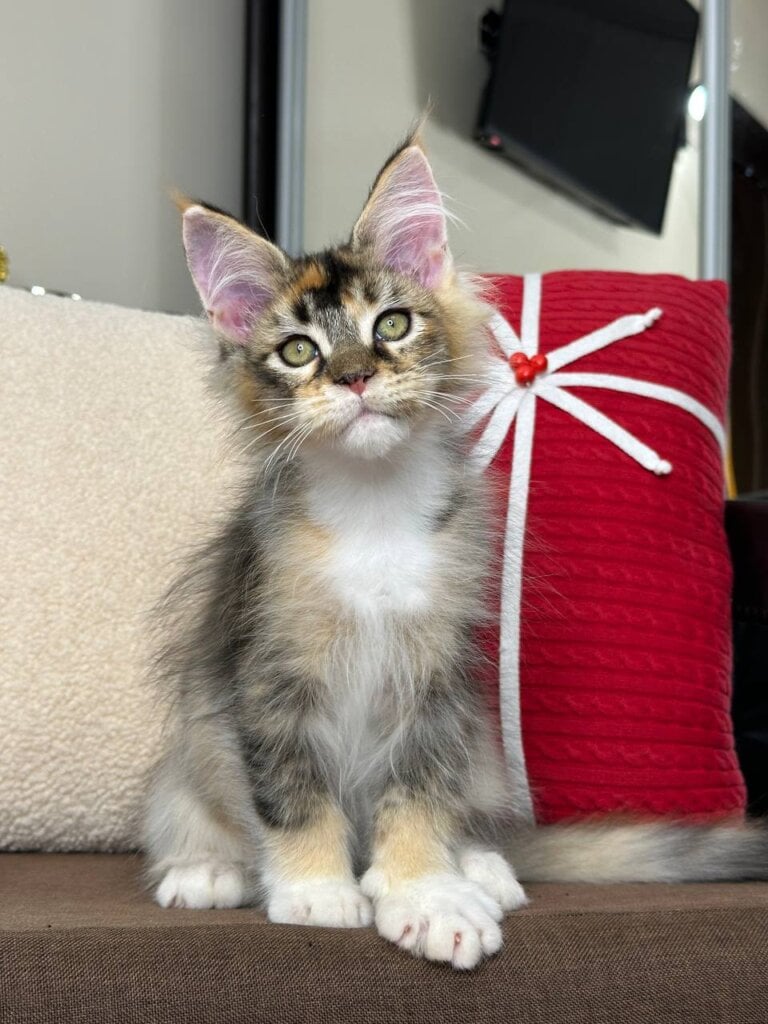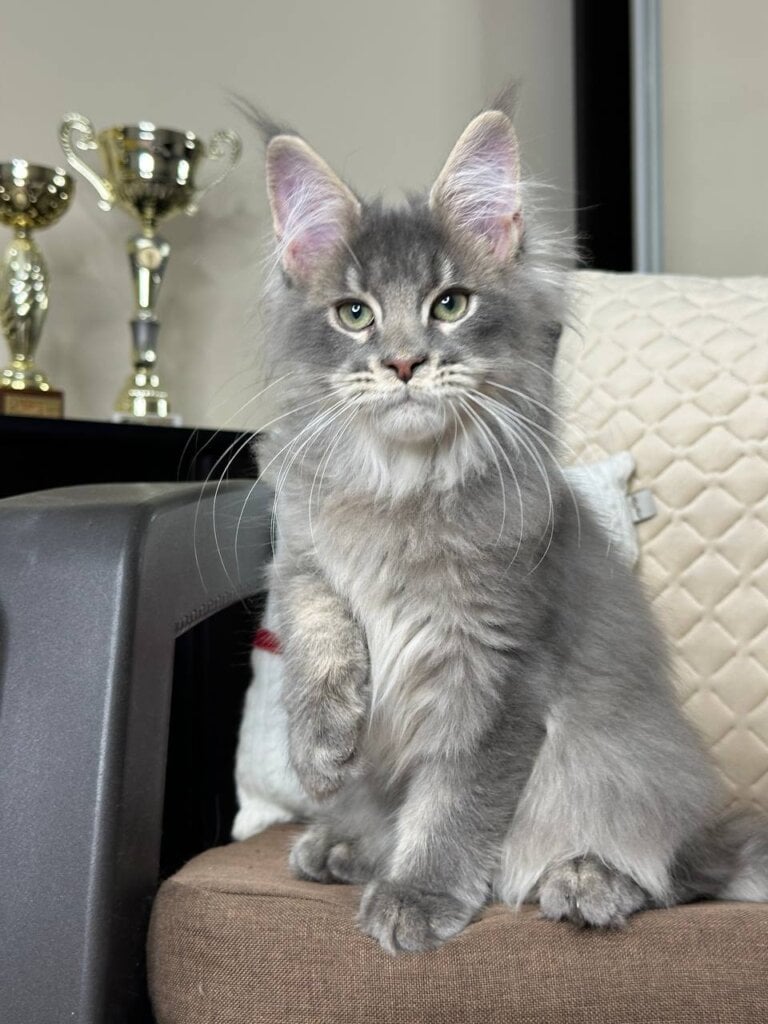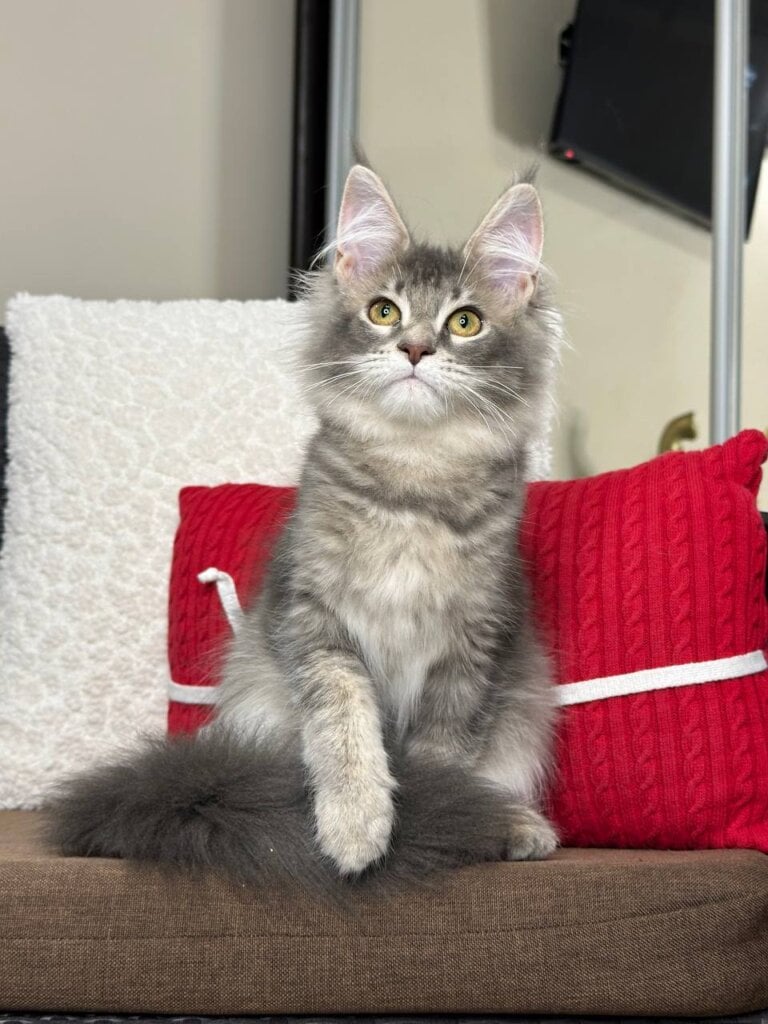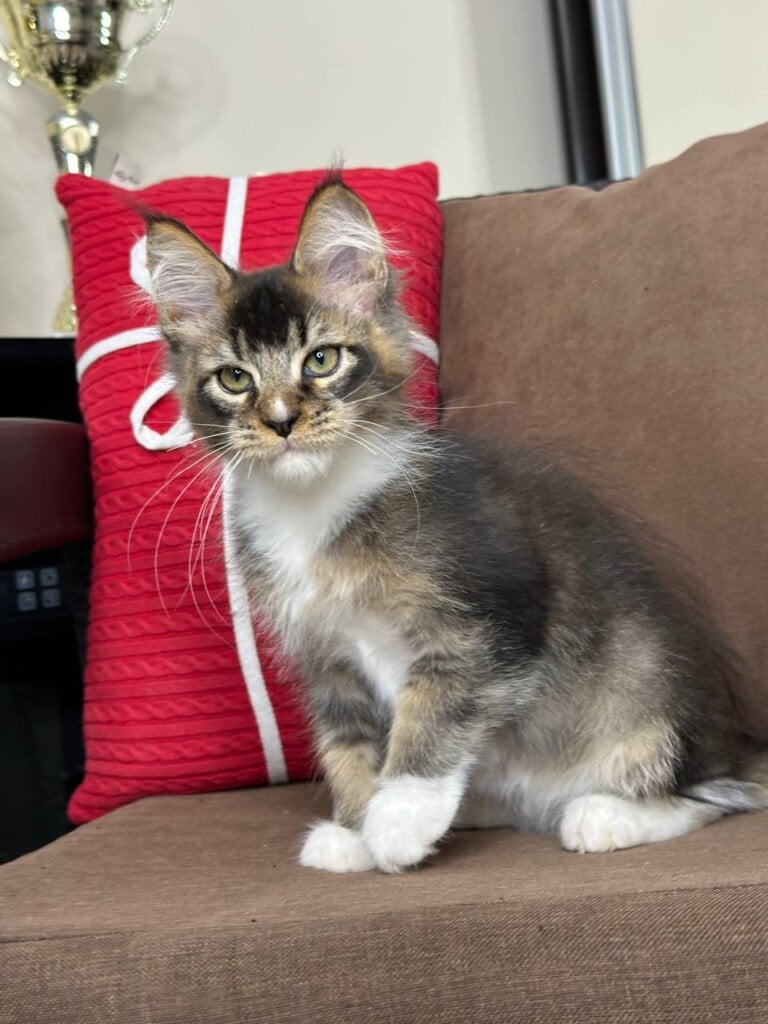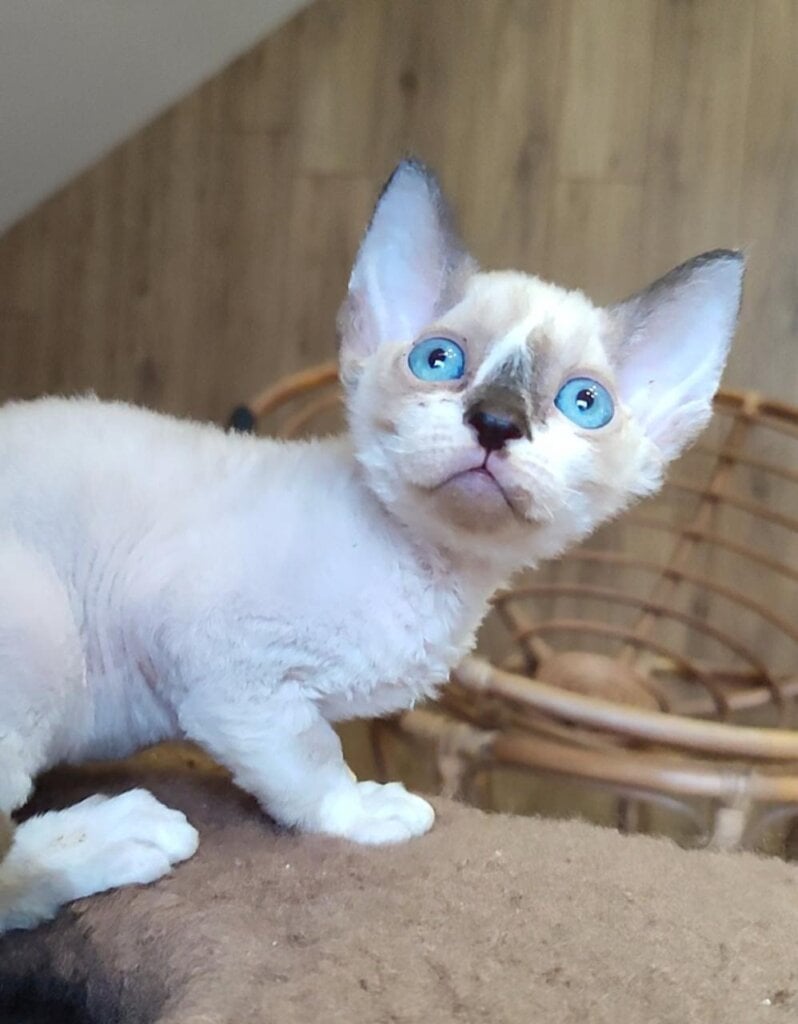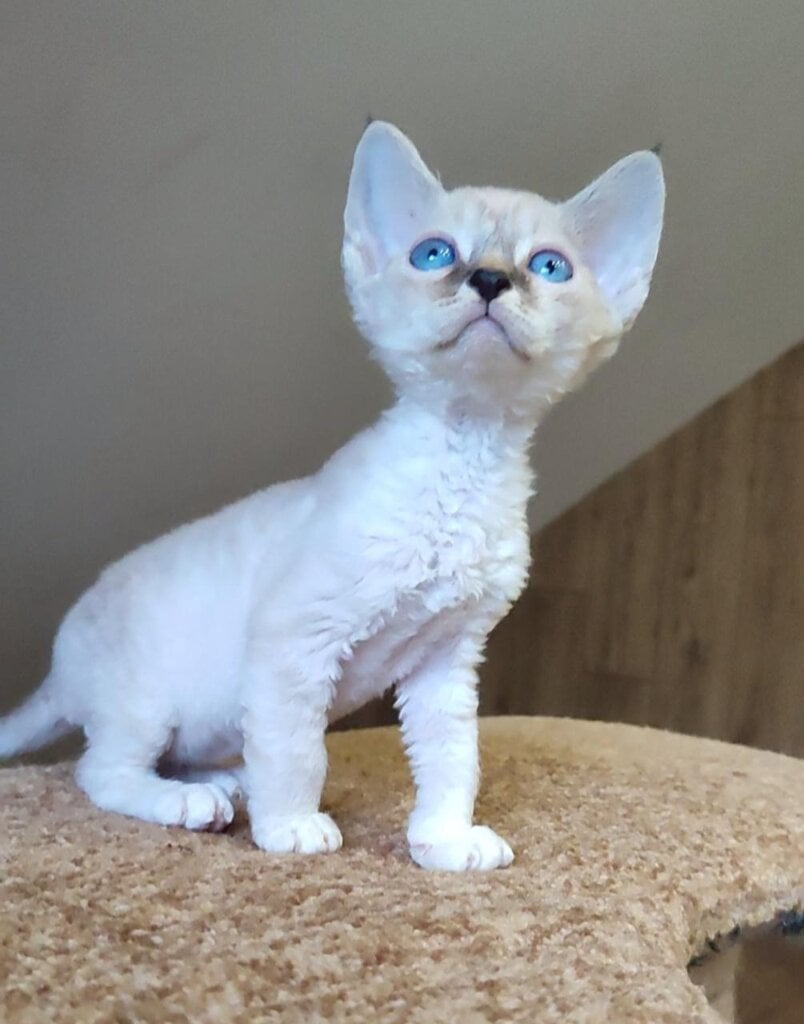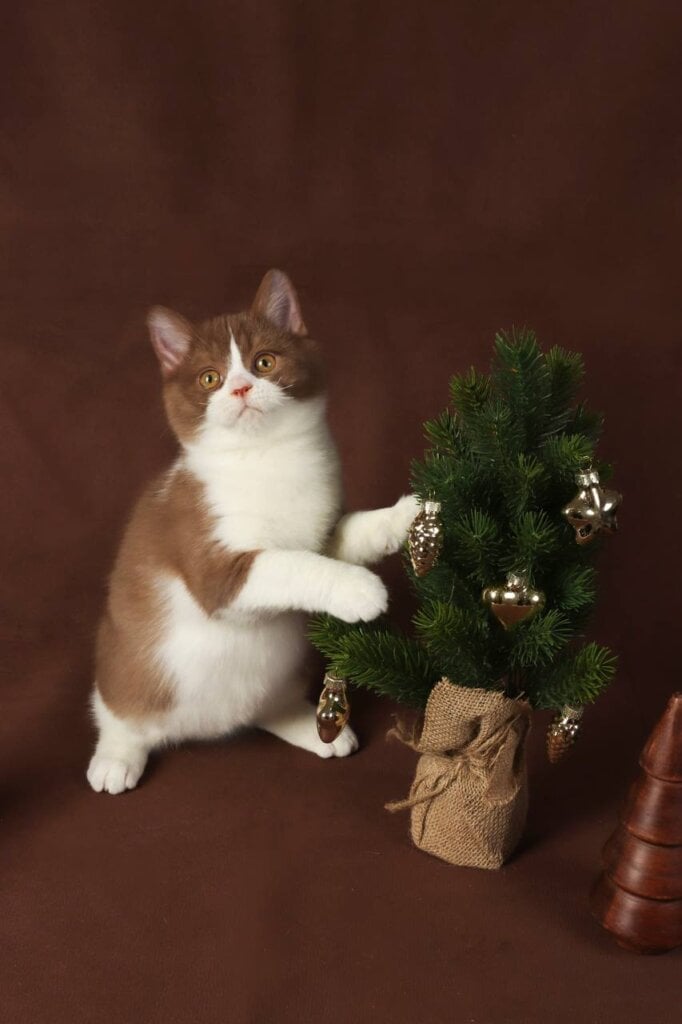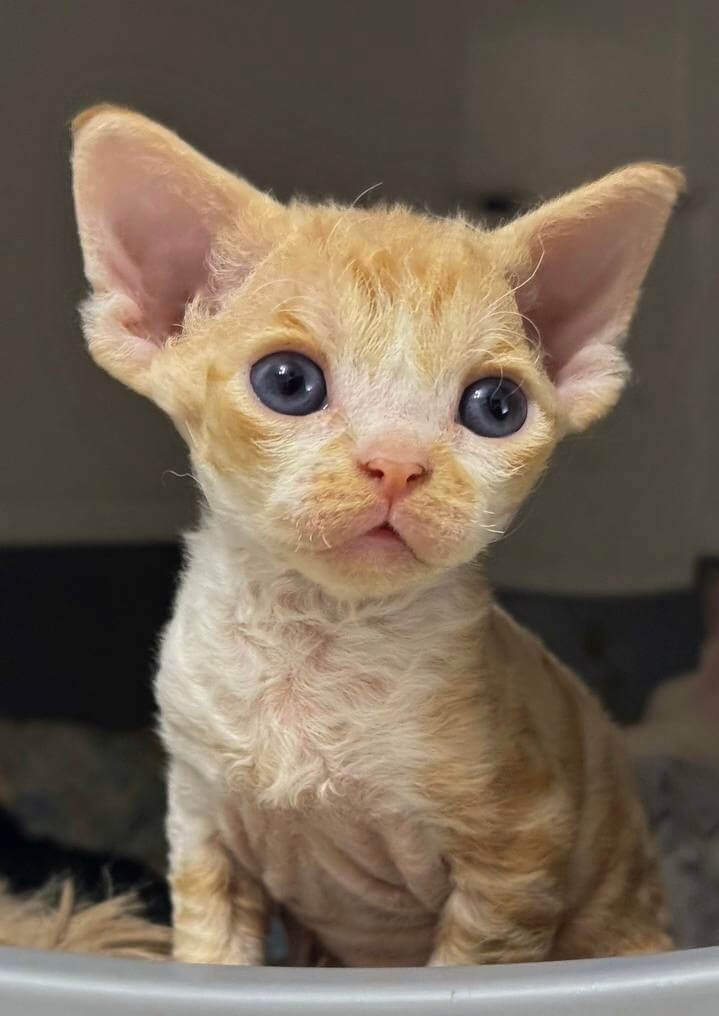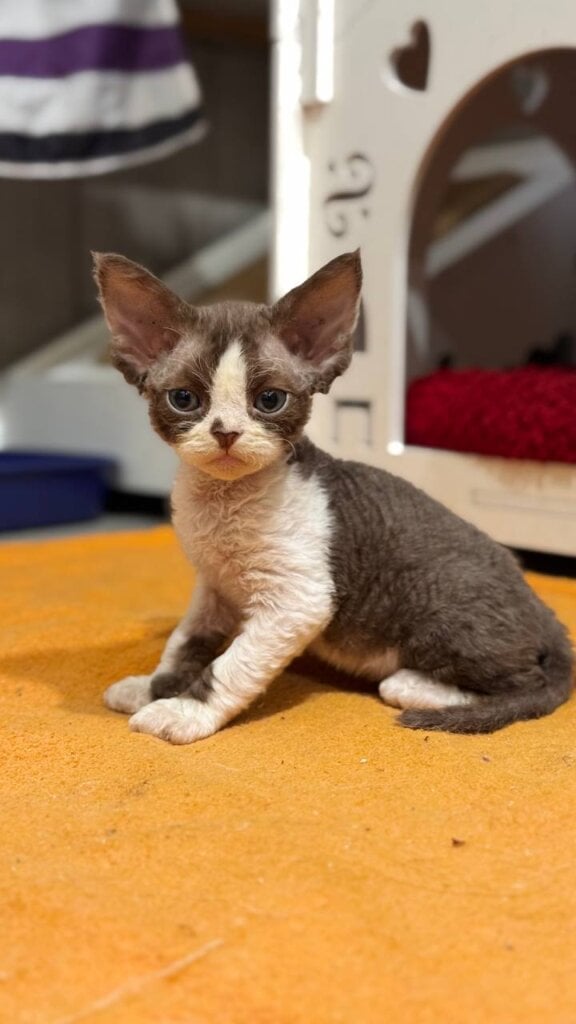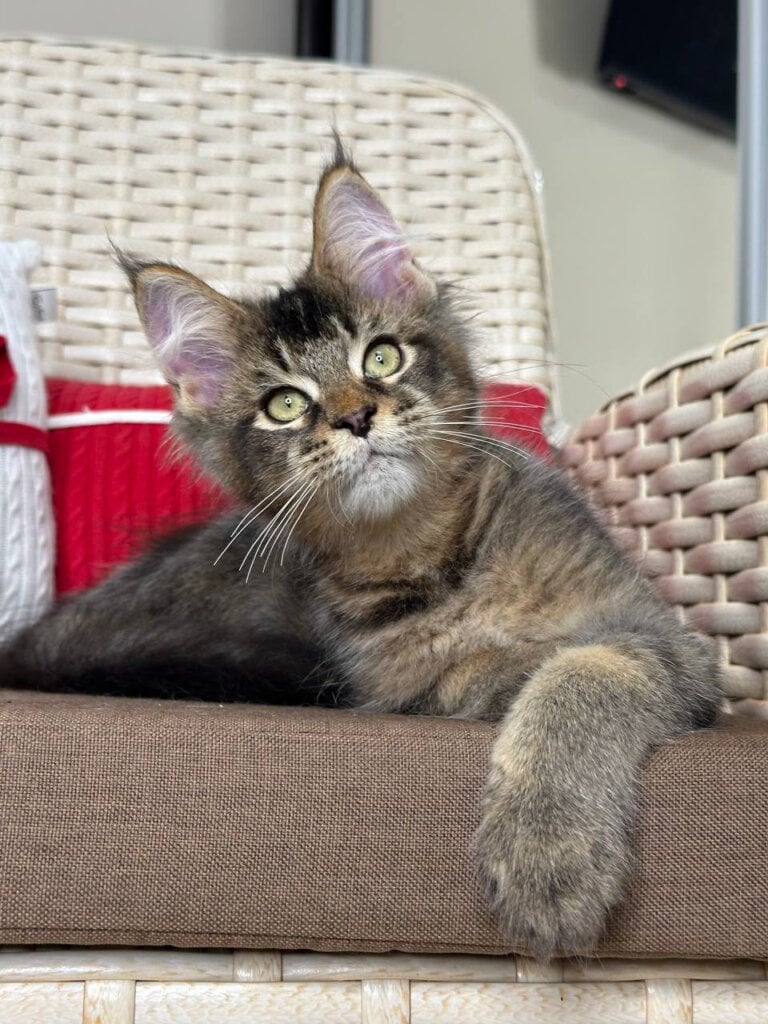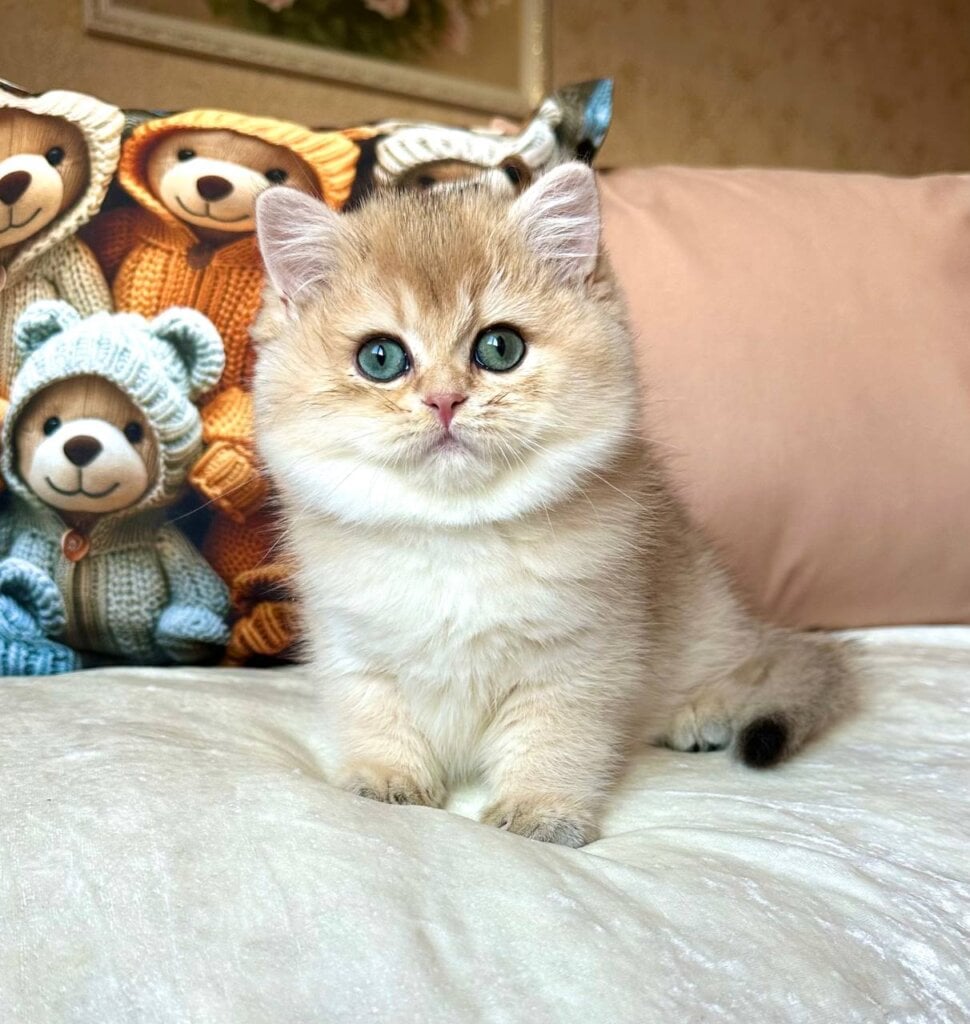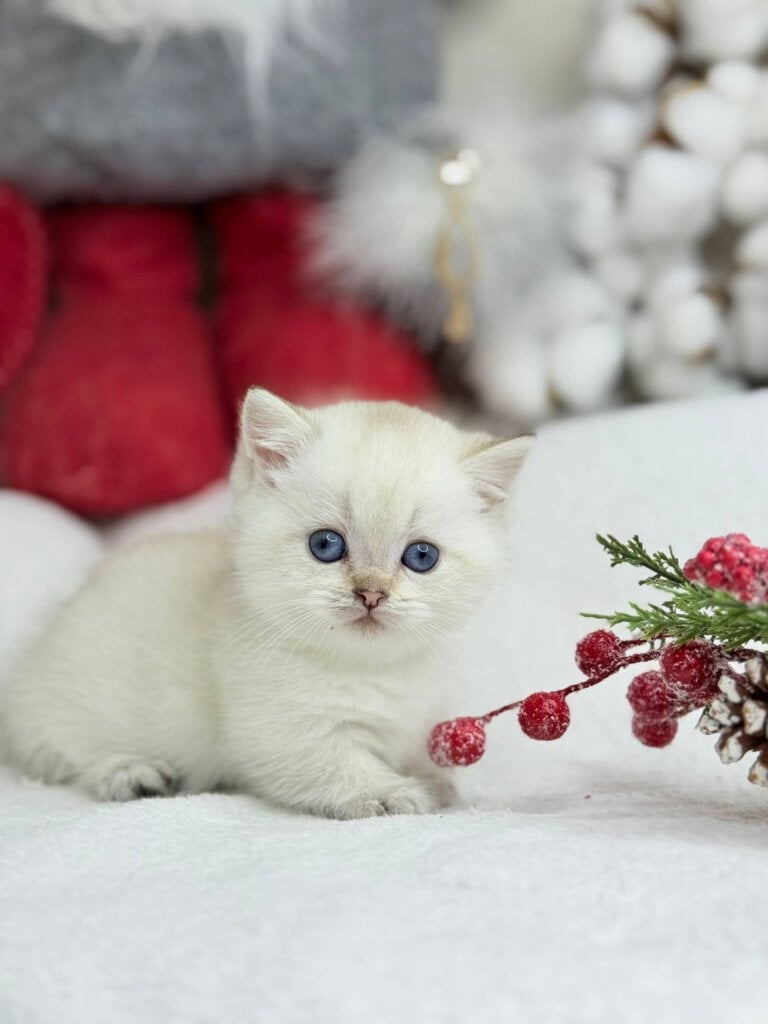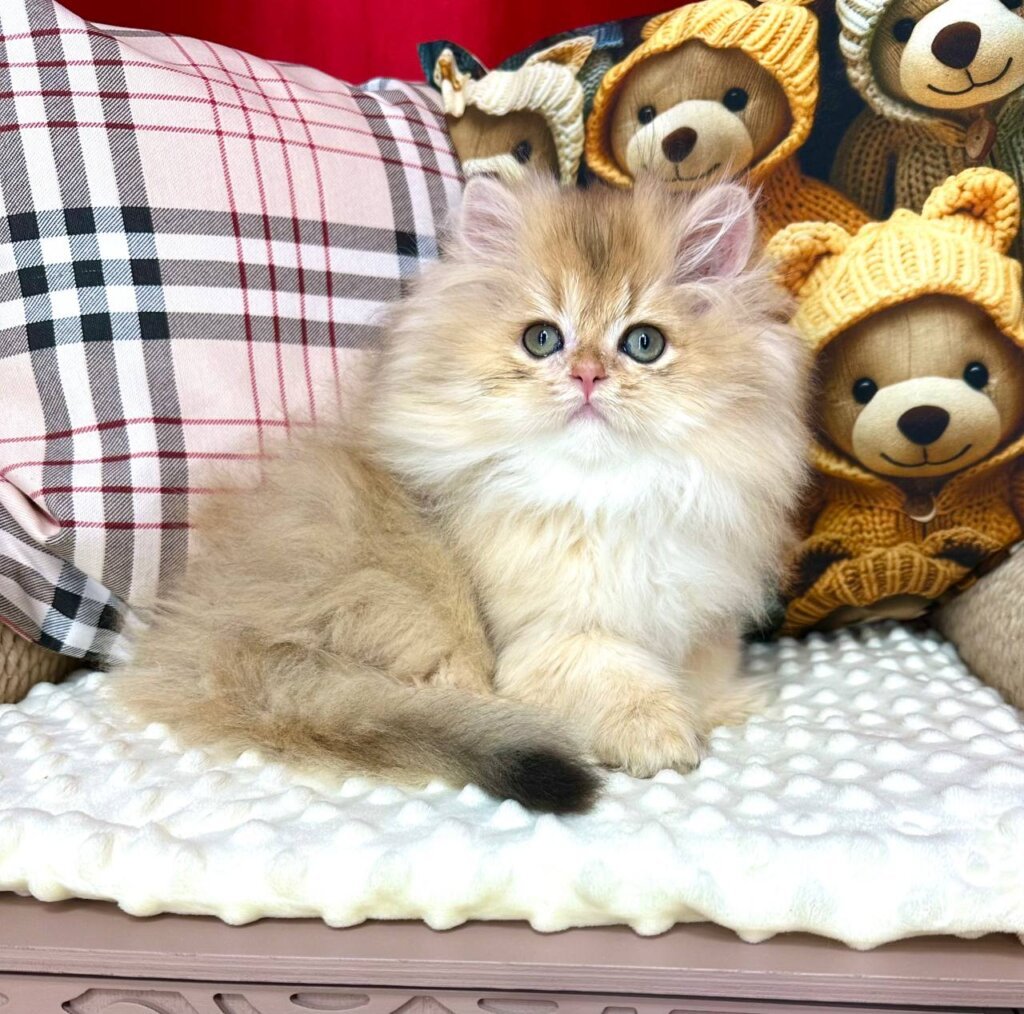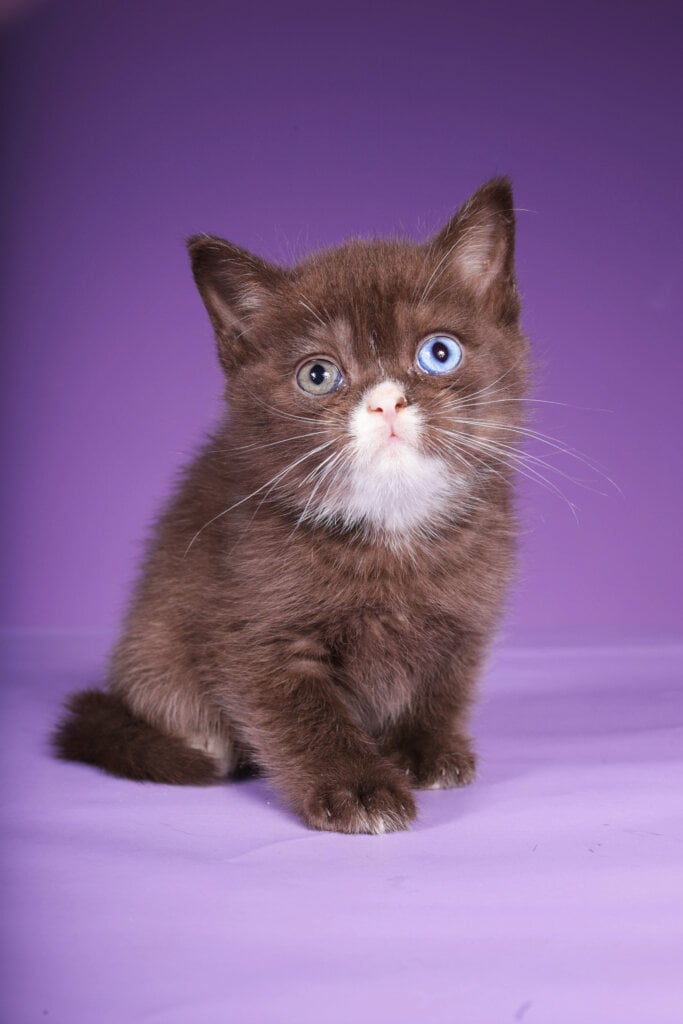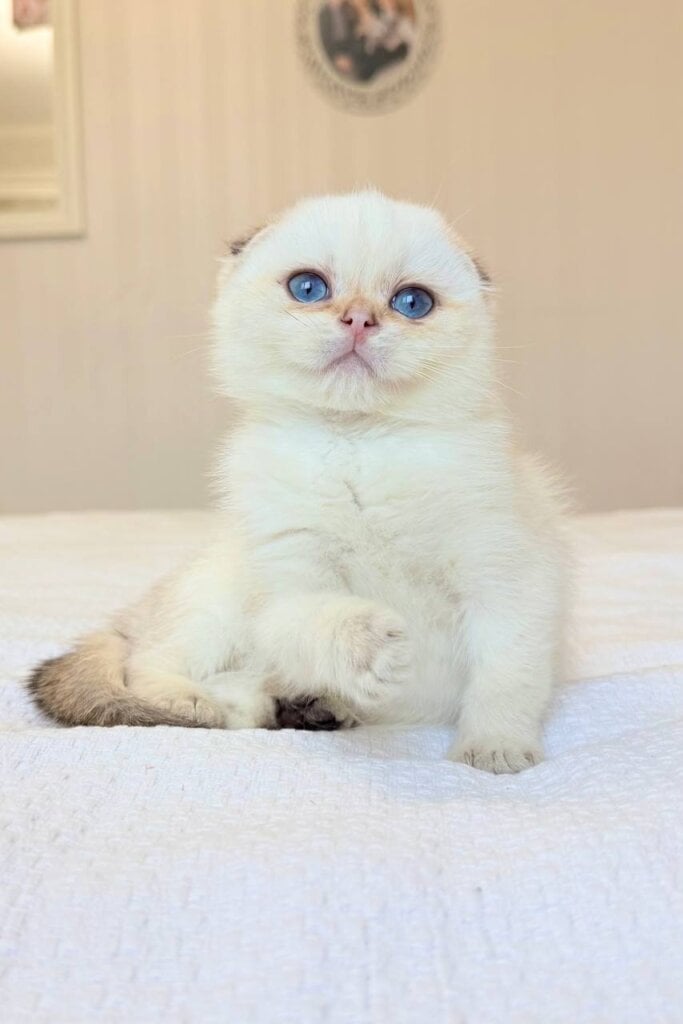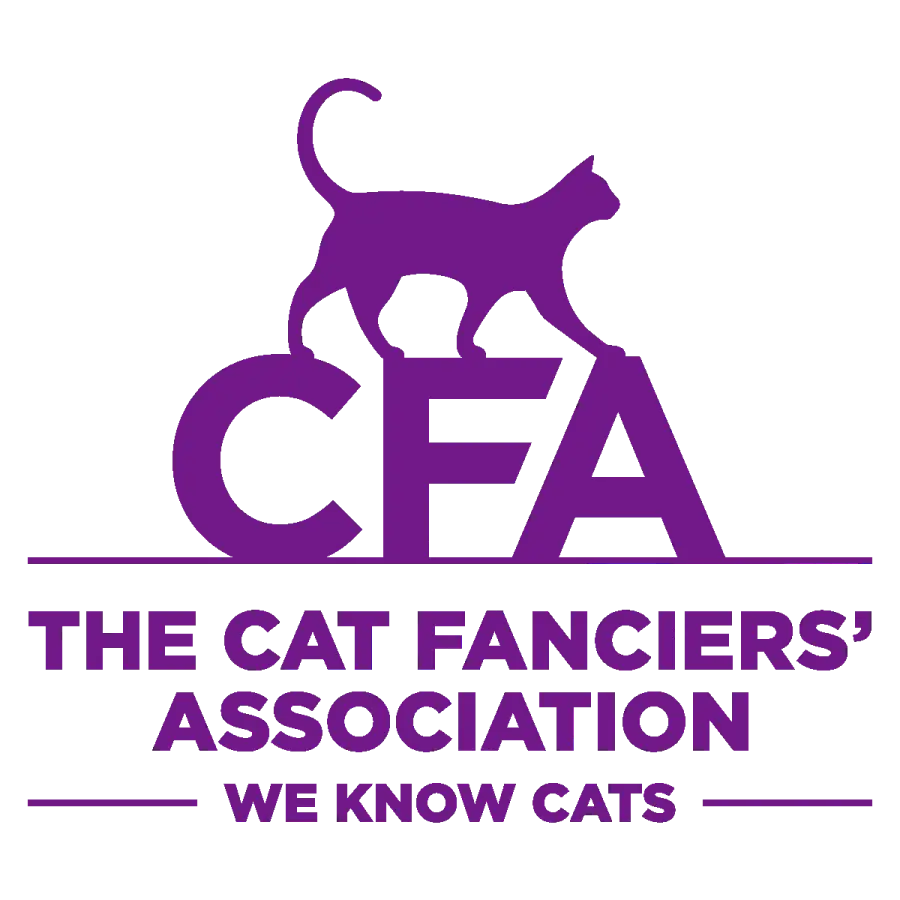Norwegian Forest Cat Overview
Origins of Norwegian Forest Cat
The Norwegian Forest Cat has an interesting and mysterious history. This breed is so closely tied to Norse mythology, that it is often featured in the fairy tales of Norway.
Though this breed nearly disappeared in the 20th century, a concentrated effort in the 1930s ensured its survival. Strategic breeding plans were instrumental in keeping their bloodlines diverse, making sure this regal feline will have a long future ahead of them.
Today, the Norwegian Forest Cat is beloved by families all over the world, celebrated for their adaptability and resilience.
Physical Features of Norwegian Forest Cat
This cat’s physical characteristics tell you everything you need to know about their suitability to the rugged Nordic climate. The Norwegian Forest Cat is known for its long, silky, water-repellent double coat, an ideal barrier against harsh winters.
They are a large breed, often described as gentle giants. Males tend to weigh in the range of 13 to 20 pounds and females from 9 to 13 pounds.
Their solid body type marked by a bushy tail and tufted ears contribute to their majestic beauty. They require regular grooming to maintain their beautiful, long fur and prevent it from getting matted. There are times when a trip to a professional groomer is in order.
Temperament and Personality of Norwegian Forest Cat
Norwegian Forest Cats are famous for their sweet, easy-going nature. They are very loyal and bond deeply with family members, frequently showing a strong preference for one person.
Their intelligence is evident in how easily they take to litter training and how entertaining they are when they interact with their human friends.
Though typically healthy, Norwegian Forest Cats can be prone to conditions such as progressive heart disease and retinal dysplasia. Even with these worries, their general health and adorable demeanor contribute to them being a favorite among families.
Maine Coon Overview
Origins of Maine Coon
Maine Coons have an amazing history that can be traced back to North America. They are one of the oldest natural breeds in the United States. Legend has it they originated from long-haired breeds that mariners introduced to New England.
The breed’s ability to survive and thrive through the region’s brutal winters is a true test of their resilience and survivalist nature. More recently, they’ve captured people’s hearts with their stunning looks. Their hearty nature and adaptability to diverse climates only add to their appeal.
Physical Features of Maine Coon
Maine Coons are well-regarded for their size and structure. Males usually weigh 16 pounds plus, making them one of the world’s largest domesticated cat breeds. Their long, bushy tails and tufted ears set them apart, truly making them a beautiful breed and harkening back to their wild ancestors.
Their thick, water-repellent coat protects them from harsher, colder climates. This silky coat is available in multiple colors and patterns. This is a breed that requires more calories to keep up with their energy demands. They typically need 60-80% of their daily caloric intake.
Temperament and Personality of Maine Coon
Maine Coons tend to be a very gentle breed, and usually become very close to one member of the family. They are loved for their docile, dog-like disposition, which makes them excellent pets.
Despite their enormous size, Maine Coons are, for the most part, quiet cats with the exception of chirping when happy or trying to get attention. Smart as a whip, they are easily litter trained, and require stimulating play to tire their bright minds.
Keeping your cat mentally and physically active will go a long way toward reducing boredom and potential destructive behavior. They are subject to health problems such as hypertrophic cardiomyopathy (HCM) and retinal dysplasia. With consistent vet check-ups, these cats will grow up to be healthy beauties.
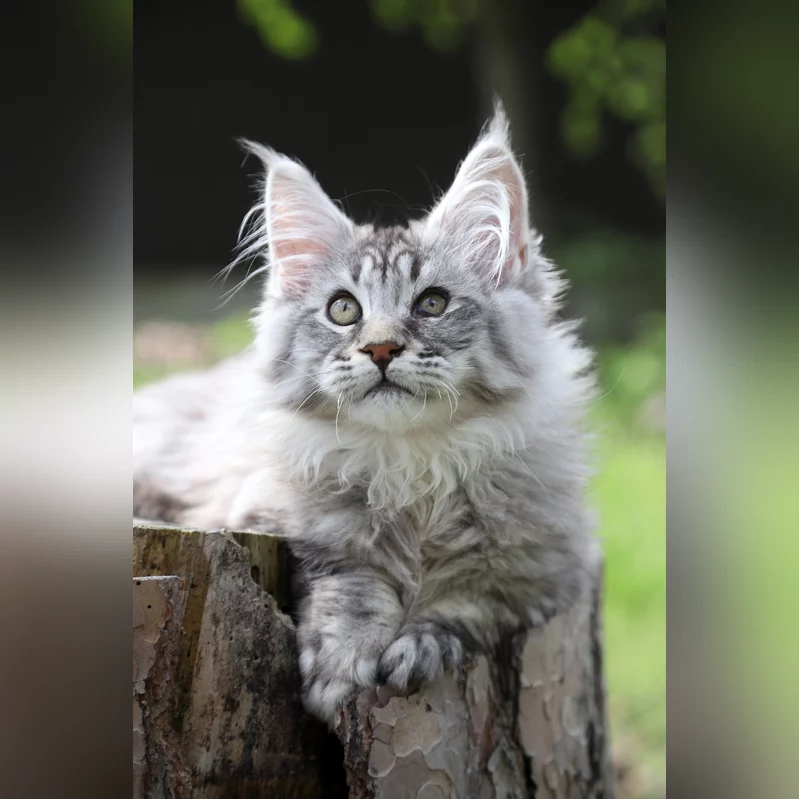
Comparing Physical Characteristics
1. Fur Types and Qualities
Norwegian Forest Cats have a thick, dense coat that’s water-repellent, ideal for the cold climates they evolved in. Their coat – longer hair around their mane, belly, and hindquarters – only enhances their regal look.
Maine Coons have a glossy top coat and a downy undercoat. Their coat has a bit more of a tactile quality, with all the fur keeping its length consistent.
These differences are what makes each breed special as far as grooming requirements and the tactile satisfaction they offer.
2. Size and Body Structure Differences
Even though both of these breeds are large in size, Norwegian Forest Cats are usually a bit bigger. Males may weigh as much as 16 pounds with females generally not exceeding 12 pounds.
Their bodies are muscular, with a more cobby body type than the Maine Coon. Maine Coons have long, strong, muscular bodies that include a broad chest which makes this breed all the more sturdy looking.
The Maine Coon’s impressive size and muscular physique add to the surprise of this breed’s gentle disposition. On the other hand, the Norwegian’s compact frame offers the ideal mix of power and quickness.
3. Head and Ear Shape Variations
Head shapes offer up another interestingly stark difference. Maine Coons are known for their square head shape, which adds to their stately appearance.
Norwegian Forest Cats have a more triangular head shape, which makes their features more angular and sleek. Norwegian Forest Cats commonly have lynx tips on their ears, which contributes to their wild look.
Maine Coons do not have these identifying ear tufts.
4. Eye Shape and Expression Differences
Eye shapes and expressions help set these breeds apart. Maine Coons usually have large, tufted, expressive eyes that make them look friendly and welcoming.
With their slightly almond-shaped eyes, Norwegian Forest Cats give the appearance of being particularly clever and attentive.
These all-important subtle differences in eye shape play a huge role in the overall personality and charm of each breed.
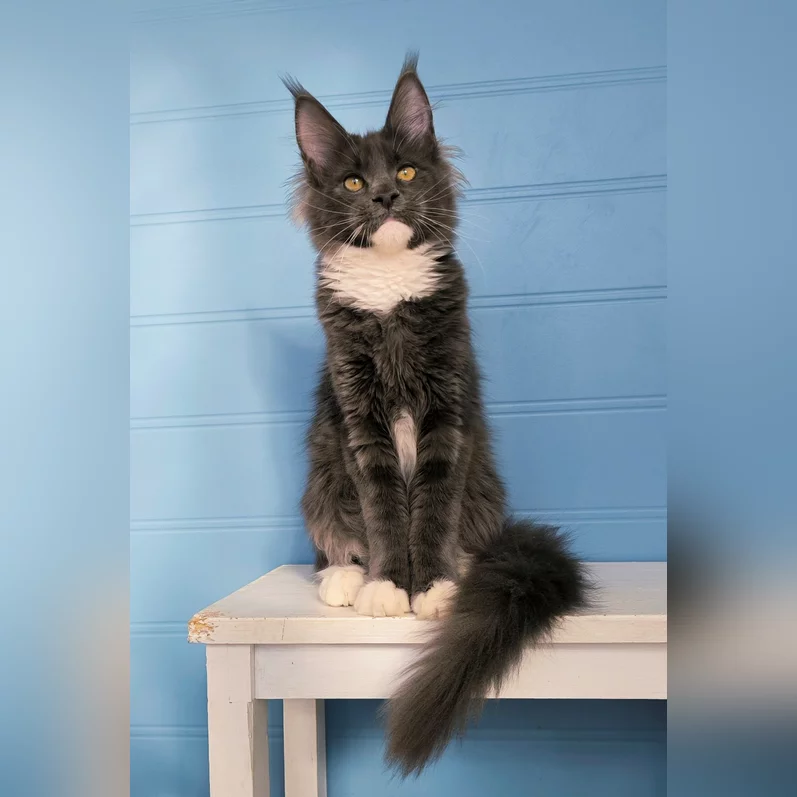
Temperament and Behavior Analysis
Friendliness and Affection Levels
Maine Coons are known for their dog-like quality, showing fealty, love, and an overall chill personality. They do tend to develop a very close attachment to one person, but are very kind to all. Norwegian Forest Cats, or “Wegies”, enjoy this friendliness, loving attention from their families.
Both breeds do well in households with children and other pets and provide their family with love and friendship.
Activity and Playfulness Levels
For example, Maine Coons are over 80% more likely to be described as playful and energetic than Norwegian Forest Cats. They thrive on interactive play, and are sure to entertain their families with their humorous hijinks.
Norwegian Forest Cats have a more chill temperament, loving to play but in a more relaxed way. Both breeds are content to take life in stride, easily adjusting to quiet times indoors – ideal companions in either busy or laid-back homes!
Intelligence and Trainability
Maine Coons are very smart, so litter training and other basic tasks are easy. They are motivated by an unquenchable curiosity, which pushes them to explore and learn – often picking up tricks and skills with apparent ease.
Norwegian Forest Cats are extremely intelligent too, but they’re a little more subtle, showing their smarts through observation before action. Both breeds thrive on mental stimulation, so puzzle toys and interactive games are perfect for keeping their minds sharp.
Vocalization Patterns
Maine Coons are famous for their chirps and trills, using these vocalizations to convey joy or to get your attention. Compared to other breeds, Norwegian Forest Cats are much quieter, preferring to express themselves more with body language.
Their placid temperament contributes to their quietness, making them an ideal choice for someone looking for a quieter companion.
Territorial Behavior
Both breeds are affectionate and loyal, but Maine Coons may seek more attention. They have a gentle, even temperament, but they’re fragile and can’t handle a rapid change in conditions.
Norwegian Forest Cats are equally territorial, but they are more businesslike and cool-headed in their defense of their turf. That makes them less high-maintenance when acclimating to new environments.

Health and Care Considerations
Lifespan and Common Health Issues
Whether you’re planning to adopt a Maine Coon or a Norwegian Forest Cat, it pays to know their health considerations. Maine Coons are prone to hypertrophic cardiomyopathy, a heart disease, and hip dysplasia, which can cause painful arthritis in their joints. They have a well-documented predisposition to obesity, which can affect their long-term health as well.
Norwegian Forest Cats are usually very hearty, sometimes reaching 20 years old. They can be born with genetic conditions such as spinal muscular atrophy, which affects their muscle strength and tone. They are also prone to patellar luxation, which dislocates their kneecaps. Regular veterinary visits are important for both breeds to detect any health concerns early on.
Grooming Needs for Each Breed
Both breeds have wonderful, water-repellant coats that require frequent grooming to keep them in top condition and free of mats. Daily brushing helps control shedding and avoid matting, so brushing becomes an important aspect of their care regimen.
Keeping their general hygiene in check means brushing their teeth daily, trimming their nails every few weeks, and cleaning their ears and eyes regularly. It’s equally crucial to cut the fur on their paws if it gets long and shaggy. Not just to keep them looking their best, but because these grooming practices are fundamental to their health and welfare.
Dietary Requirements for Optimal Health
Diet is an important focal point in both Maine Coons and Norwegian Forest Cats health. A healthy diet, high in protein and key nutrients, supports their active lifestyles. It’s recommended to help prevent obesity in cats such as Maine Coons.
Regular exercise is just as essential to achieving and maintaining a healthy weight and preventing obesity-related harms. Providing a complete diet with proper nutritional composition maximizes their health and lifespan. This will ensure they remain your loyal furry friends for many years to come!
